You are using an outdated browser. Please upgrade your browser to improve your experience.
Fall in love with Tuscany!

Discover Tuscany Newsletter
Ask the Tuscany Experts on our Forum
- Book your Hotel
- Rentals by Owners
- Museums & Tours
Get the lowest rate for your Hotel in Tuscany through Booking.com
Get the best deal direct from the owners on TuscanyAccommodation.com
Book your unique Tuscan Experience
Book your Tour
Book your Tickets ahead & Skip the line!
Buy Museum Tickets
- Destinations
- Montecatini
- Montecatini Terme: what to see
Montecatini Terme: A Useful Information & Mini Guide
Thermal waters & architecture: beauty & relax near florence.
The story of Montecatini Terme is closely tied to the castle and fortress that towers above in the town of Montecatini Alto, but it does have many particular traits that distinguish it from other small Tuscan towns . Not the least of which are the special waters that flow into the many spas.
Positioned between the walled city of Lucca and the art mecca of Florence, an itinerary stop at Montecatini Terme offers a reprieve from touring the Tuscan countryside, vineyards and monuments and provides a well earned bit of relax in a luxurious atmosphere .
A Little Background
It was during the end of the 1800's that the Tuscan town of Montecatini Terme became an important international center for the " Belle Epoque " , visited by artists, musicians & composers and the "rich & famous" from all over (Giuseppe Verdi, Giacomo Puccini, & Richard Strauss, just to name a few) though, this area was well known even during the Roman times for its special waters.
A tumultuous past includes bloody battles, contested borders and the final act of destruction with Cosimo dei Medici nel 1554 , who practically razed the town to the ground. However, this was an area with strong traditions and ties to the land, and they slowly rebuilt the towns and an active economic base.
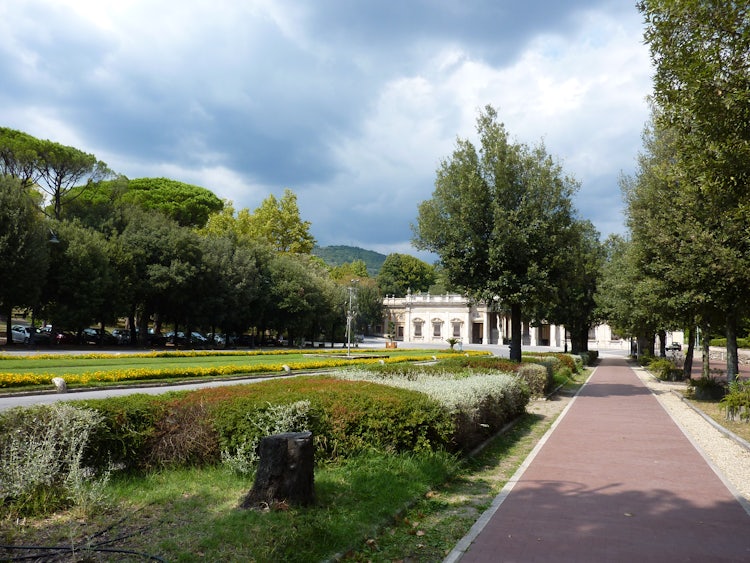
Dei Bagni di Montecatini
Once known as the “baths” of Montecatini, it was prevalently characterized by the marshy grounds which formed a natural barrier protecting the castle and fortification in Montecatini Alto . It wasn’t until the land reclamation started by the Medici family that it began to transform into an area which could capitalize on the naturally warm, and some even claimed “healing”, waters that seep through the Earth's crust. In 1477 we have documents of the first “organized spa” , even though we know that the healing power of the waters were known and documented as early as the 1200’s. Later, in the late 1700’s, under Granduca Pietro Leopoldo di Lorena, we find the construction of “ lo Stradone de' Bagni” (literally: the big road with spas) which is now via Verdi, and the location of many beautiful pools.
Water Flows through the Heart of Montecatini Terme
Today’s architecture and monuments are mainly tributes to water, which is the life of the city. You will find numerous water fountains from the early 1900’s up until today, paying homage to the visceral experience and sound of the water. In addition to these flights of fancy , you will be treated to a visual display of modern buildings and spaces which embraced the canons of Liberty and Art Nouveau architecture.
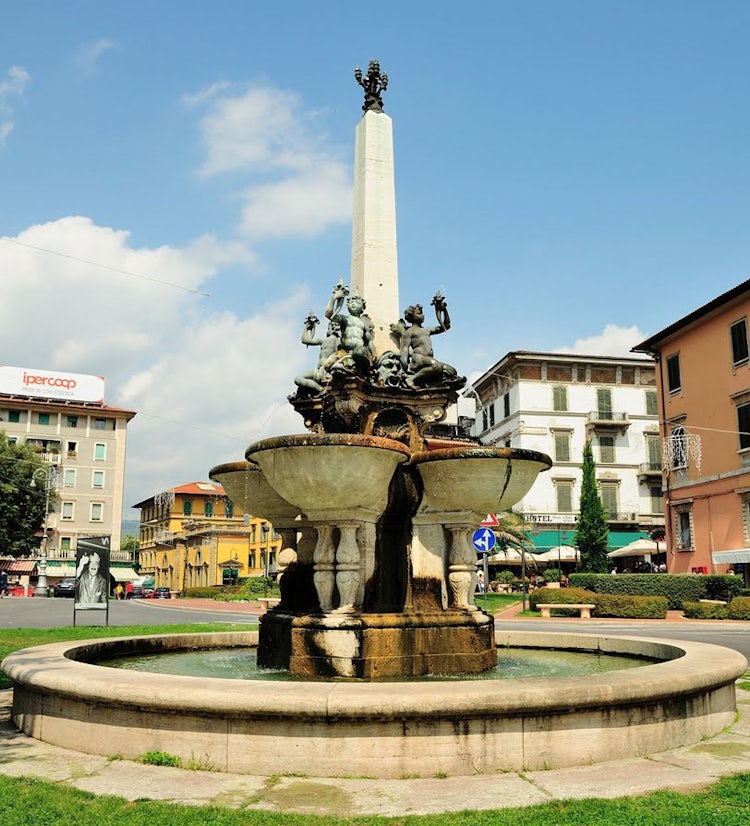
Guidotti Fountain
The monumental fountain by the sculpture from Pistoia, Antonio Guidotti, was erected in 1913 in a square long used for markets and fairs. Built of travertine and bronze, it is filled with streams of water gushing forth from horns held by “putti” riding dolphins. The water pours into four basins which then overflow into a large tub.
Fontana Airone
This whimsical fountain from 1925 by the Florentine sculptor Raffaello Romanelli, is a well known symbol of Montecatini placed in front of the Queen pavilion. The original heron was stolen, and the fountain has long since been moved indoors for its own protection.
The heron and the frog allegory represents the rebirth: the territory of Montecatini that, from swamps and unhealthy, due to reclamation by the Grand Duke of Tuscany Pietro Leopoldo of Lorraine became pretty town and a source of healing waters.
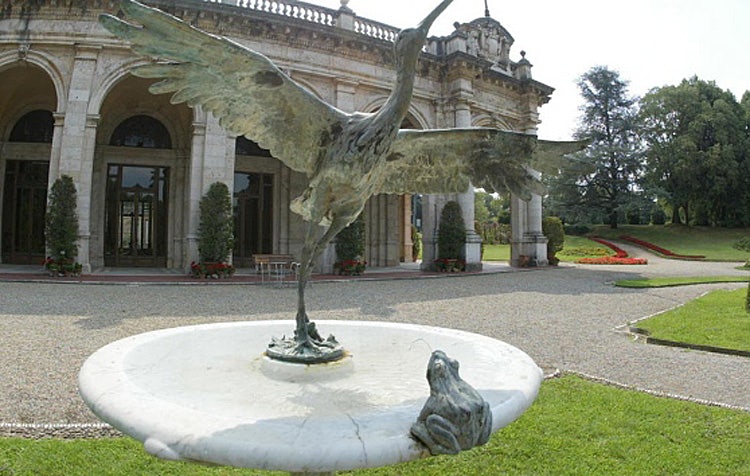
Fountain Mazzoni
This contemporary fountain date in the 1930’s, and is located in the square in front of the railway station. The architect and expert in the epoch Angiolo Mazzoni, has a modern touch which spans two wars and several advances in design.

Duetto d'Acqua the Fountain of Shingu
Mixing sight with sound, this fountain sits a little over three meters high and produces beautiful musical effects. The Japanese artist Susumo Shingu created a mobile sculpture that has water falling from into two parts and running inside of the tubes producing lyrical sounds.

Scultura d'Acqua fountain made by Pol Bury
The structure, built in the 1970’s — exhibited by the artist at the Guggenheim in New York — is formed by steel cylinders moved by the force of the water that flows in, producing, like the previous fountain, sound effects.
Walking Around Montecatini Terme
We have already had occasion to speak of the art of the early twentieth century of Montecatini, especially the Art Nouveau style, but the spa town preserves many other buildings which arise in different periods of the twentieth century, they deserve a mention for their artistic and architectural value or purely historical.
Palazzina Regia a sober building which was the summer residence of the Medici family.
War Memorial in the Royal Park, opposite to the Town Hall: it is a fine work of Giuseppe Petroni.
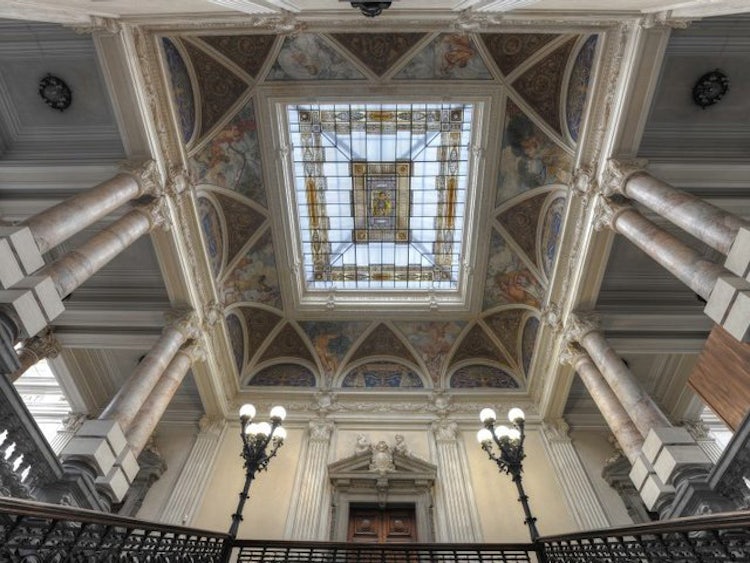
Town Hall is located on the right side of Viale Verdi: it was built between 1913 and 1919, in the place where there were the Grand-Ducal stables, to provide the city with a proper civic representative and appropriate to the size and role the city was taking.
Padiglione dei Sali (Pavilion of salts) is at the entrance of the Verdi theatre; it was a former kiosk for the sale of salts in the early twentieth century, now home to several businesses.
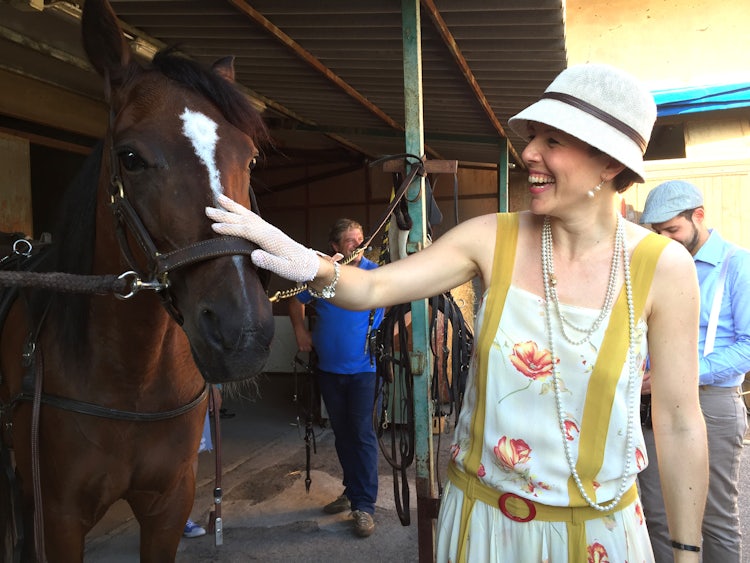
Ippodromo Sesana was built in 1916 by Baron Giuseppe Patrone, thus over a 100 years old! It has been said that “the races, the horses, (and) the history of horseracing are an integral part of Montecatini”. Recently restored for its 100 year anniversary, this race track has a new life. Named after Giuseppe Sesana, who later became the sole owner in 1934; he brought many improvements to the racing establishment making it a point of reference in Italian horseracing.
Read here for the Calendar
Museo dell'Accademia d'Arte d. Scalabrino exhibiting over 150 works by Lorenzo Viani, Galileo Chini, Amalia Dupre and Primo Conti.
Hours & Visitor Details

The Healing Waters
It is not possible to talk about Montecatini and not mention the waters in the spas; this crystal clear liquid is especially noted for the liver and the digestive system. In addition the mineral water cure is appropriate for a “wide range of liver disturbances, difficulties with liver, stomach, intestines and kidneys.” With up to 10 historical structures, you can tour the architecture of Montecatini admiring stately spas in a contemporary style.
Terme Tettuccio building is perhaps one of the most famous, if not the most photographed thermal spa in Montecatini. Built between 1779-81, the establishment was restructured in 1928 and is characterized an impressive garden with Lebanon cedars, palms, sequoias, acacias, laurels, wisteria, pine trees, lime trees and adorned by colonnades, grandstands, exedras, fountains and large flower beds bordered by box hedges. Noteworthy is the colored glass panels which illuminate the front entrance and the bronze pool. Salone Portoghesi with in the Terme was designed and built between 1987 and 1989 by the Roman architect Paolo Portoghesi, from which it takes its name, is an interesting and beautiful interpretation of the Art Nouveau style that has given so much in aesthetic appeal to Montecatini at the beginning of the twentieth century.
Learn More about the Spa Services
Related Sections
You might also like, day trips from montecatini, exploring montecatini alto, eating out in montecatini, plan your visit.
Tourist Information Office
Where: Viale Verdi 66/68
Tel: +39 0572 772244
Top Experiences in Tuscany

Author: Donna Scharnagl
It has been more than 25 years since I took my first steps in Italy and I still haven’t found a good reason to leave. Between the food, the culture, the history, the art, the landscapes … did I mention the food? I have become a lifelong student. It didn't take long to learn that Italians all have stories that long to be told; stories that paint a picture of how hard work produces character, how life is made of ups and downs and how good it feels to laugh.
You'll love reading about...

Based in Montecatini for your Tuscany vacation?...
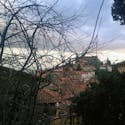
Explore Montecatini Alto and its medieval...

Have a look at my suggestions about the best...
Questions? The right place to ask is our Forum *
* Questions posted on Comments above will no longer receive replies: please ask on our Forum !
Our Travel Guides
Chianti Travel Guide
Pisa's Top Attractions
Things to Do in Lucca
Food to Try in Tuscany
Best Wineries
Best Time to Visit
Weather & Climate
Airports in Tuscany
Getting Around Tuscany
Top Things to Do
Best Chianti Hotels
Best Lucca Hotels
Castle Hotels in Tuscany
Top Destinations in Tuscany
Best Beaches
Siena Travel Guide
Montecatini Terme Travel Guide
:max_bytes(150000):strip_icc():format(webp)/martha_bio-56a3c8865f9b58b7d0d3b5fe.jpg)
TripSavvy / Christopher Larson
Montecatini Terme, one of the top Tuscany spa towns, is in the heart of Tuscany near Florence, Lucca, Pisa, and Viareggio on the coast. It's a pleasant and peaceful town reminiscent of bygone days with a big park in the center, three thermal establishments, an elegant wellness center, high-quality shops, and nice bars and restaurants.
With its many reasonably-priced hotels and convenient location on the rail line, Montecatini Terme makes an excellent base for exploring Tuscany.
How to Get There
Montecatini Terme is on the rail line between Lucca and Florence, both less than an hour train ride. Two trains per hour run between the two cities stopping at both of Montecatini's stations and one train per hour continues to Viareggio on the coast. Both stations are right in town.
The closest airports are Florence and Pisa. By car, take the A11 to Montecatini exit and follow the signs. Most parking in town is metered.
Where to Stay
Grand Hotel and La Pace , a 5-star historic Liberty style hotel, is one of the most elegant hotels in Montecatini Terme.
Things to Do
- Terme Tettuccio is a historic spa famous for its thermal waters . It's a lavish Liberty-style building with a park and nice places to sit outside. Most days there's an orchestra in the mornings and a piano player in the afternoons. The spa is open daily from May through September and is worth visiting just to see the beautiful interior.
- Spa treatments - A wide array of classic and well-being spa treatments are available at the wellness centers, spas, and in the 5-star hotels. Excelsior Spa has a large wellness center with a variety of treatments including beauty, mud, massage, and baths. Terme Redi has baths and lots of modern equipment. Terme Leopoldine, another historic spa, was recently restored.
- Viale Verdi - The main street through town leads from Piazza Popolo to the spas and is bordered on one side by the park. Viale Verde is lined with shops, cafes, and restaurants. On this street are two theaters, the tourist office, and the historic Gran Cafe Gambrinus, still a lively meeting place.
- Music and theater - A wide range of musical performances are held in the Verdi Theater, Terme Tettuccio, and outdoors in summer. The summer music festival, Estate Regina, runs from late May through early October.
- Relax - The spa towns of bygone days were designed with relaxing vacations in mind. In addition to the spas, the park, shopping streets, and cafes are pleasant places to stroll or sit and enjoy the ambiance.
- Day trips - Many places of interest in Tuscany can easily be reached within an hour. Top places to visit by train are Florence , Lucca , and Viareggio.
Montecatini Alto
A historic funicular railway, more than 100 years old, runs from Montecatini Terme up the hill to the picturesque hill town of Montecatini Alto, where there's a small castle, three churches, a large square with restaurants and outdoor cafes, a few tourist shops, and great views over the countryside.
Top Florence Day Trips
Florence Airport and Transfers to Florence Train Station
The Top 10 Places to Go in Tuscany
How to Take the Waters at Terme Tettuccio Spa in Montecatini Terme
Tuscany Guide: Planning Your Trip
The 15 Best Destinations in Italy
How to Save Money on Your Italian Vacation
Day Trips From Lucca, Italy
Siena Guide: Planning Your Trip
The 14 Best Day Trips from Rome
Where to Go on Italy's Mediterranean Coast
Roman Amphitheaters in Italy
Your Trip to Florence: The Complete Guide
A Travel Guide for Italy's Forte dei Marmi
The Most Romantic Places in Italy
The 15 Best Wineries in Tuscany
Explore Montecatini Terme

Plan Your Trip to Montecatini Terme: Best of Montecatini Terme Tourism
Essential montecatini terme.
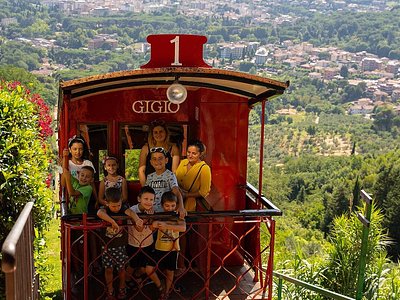
Trending in the forums
Montecatini Terme Is Great For
Wine tastings.

Historical Tours

Cultural Tours

- Grand Hotel Francia & Quirinale
- Hotel Ercolini & Savi
- Hotel Columbia Wellness & SPA
- Grand Hotel Plaza & Locanda Maggiore
- Grand Hotel Croce di Malta
- Antica Osteria Toscana
- Ristorante Dal Mi' Cecio
- La Pecora Nera
- Trattoria Da Gina
- Pizzeria Mordi e Fuggi
- Funicolare di Montecatini Terme
- Parco delle Terme di Montecatini
- Terme di Montecatini
- Terme Tettuccio
- Grotta Maona
- Guided tours of the olive grove with oil tasting.
- The Best of Cinque Terre Small Group Tour from Montecatini Terme
- Cinque Terre Day Trip with Transport from Montecatini
- Chianti Wine and Vinci half day Small Group Tour from Montecatini Terme
- Siena, San Gimignano and Chianti Wine Small Group from Montecatini Terme
- Best places to visit in Tuscany
Montecatini Terme
In the province of Pistoia , one of the most interesting tourist destinations is undoubtedly Montecatini Terme . This town of 20,000 inhabitants is in fact a destination that has always been synonymous with tourism , thanks above all to its thermal springs , which already in the 19th century attracted many holidaymakers to the city, including several illustrious personalities such as Giuseppe Verdi, Ruggero Leoncavallo, Giacomo Puccini, and Vittorio Emanuele II. The most important personalities are commemorated on the Walk of Fame along the pavements of Viale Giuseppe Verdi, where circular studs record the main names that visited Montecatini Terme.
Today, Montecatini Terme is protected by UNESCO , being part of the World Heritage Site called the Great Spa Cities of Europe , an indivisible collection of 11 European cities that developed from the Enlightenment to the 20th century. Much of Montecatini’s success is in fact due to its thermal baths , but even if you are not a fan of this kind of thing, the town is definitely worth a visit, thanks to the many things to see, its perfectly maintained historical centre with parks, gardens and Art Nouveau villas, and the possibility of some interesting excursions in the surrounding area .
Last but not least, Montecatini is in a very favourable position with respect to the great attractions of Tuscany: Florence , Pisa , Lucca and Versilia are no more than half an hour away by car. You can therefore arrive in Montecatini Terme and choose it as a base for your stay during your holiday, thanks also to the abundant choice of hotels , the convenience with respect to the motorway and railway, and the generally lower prices compared to large cities.
Spas in Montecatini Terme
The thermal bath s of Montecatini have a centuries-old history, the first written mention being on a parchment from Lucca dated 1201. Over the following centuries they acquired fame, so much so that in 1773 the Bagno Regio , the town’s first thermal establishment, was built. The history of Montecatini’s establishments continued until 1962, when the Stabilimento Redi 1 was built.
The springs of the thermal bath s are fed by 4 springs that originate at a depth of about 70 metres; as they travel towards the surface, they are enriched with mineral salts and form 4 different waters: the Leopoldina water, the Regina water, the Tettuccio water and the Rinfresco water, each of which is specific for treating distinct problems.
Today, there are 9 thermal establishments in Montecatini , all located at a reasonable distance from the town centre. Among them, the most famous are the Terme Tettuccio 2 , with its wonderful architecture and extremely scenic interiors based on the concept of the Roman thermal baths. Also interesting are the Terme Excelsior 3 , located inside the pavilion originally designed to house the Excelsior municipal casino, and of course the Terme Leopoldine 4 , the oldest in the city, built in 1777 by the Grand Duke of Tuscany Pietro Leopoldo.
Things to do in Montecatini Terme
The historical centre of Montecatini Terme is compact and can be easily walked around. Here are the best attractions in and around the town, to be visited one by one before a relaxing bath in the spa.
Municipal palace and MO.C.A.
Along Viale Verdi, the building of the municipal palace of Montecatini Terme stands out. The project, signed by architect Raffaello Brizzi and engineer Luigi Righetti, gave birth in the early 1900s to a richly decorated building, both externally and internally, by the same firm that carried out similar works at some of the city’s luxury hotels, as well as the Excelsior casino.
Inside the town hall, the hall on the first floor, which is twice as high as the other rooms and features a cantilevered balcony, is very beautiful. But above all, visit the town hall because inside some of its rooms is the MO.C.A ., or Montecatini Contemporary Art , an exhibition space created in 2012 and dedicated to modern art . You can admire works by Joan Mirò and Pietro Annigoni, while in the past, sculptures and paintings by Amedeo Modigliani, Adolfo Tommasi, Silvestro Lega and Giovanni Fattori found space inside the MO.C.A.’s rooms.
Tamerici Pavillion
Originally a pavilion created for storing and trading salt by the company of the same name, the Tamerici pavilion is a very elegant Art Nouveau building, and certainly one of the most distinctive in the whole of Montecatini Terme.
It is located along Viale Verdi , the main street of the thermal area, outside the historical centre. Behind it is a beautiful park , much of which is occupied by the New Verdi Theatre. Built by architect Giulio Bernardini, the Tamerici pavilion is known for its bas-reliefs , inspired by ceramic work, and for its decorations, the work of painter and decorator Galileo Chini, one of the protagonists of the Art Nouveau style in Italy, while the external cladding in stoneware panels was made by Domenico Trentacoste.
Montecatini Alto
Montecatini Alto is a hamlet of Montecatini Terme. As can be deduced from its name, it is located at altitude, on the top of a hill almost 300 metres above sea level. It is a small hamlet of just over 400 inhabitants, but it is worth visiting if only to ride on the Montecatini Terme funicular railway , inaugurated in 1898, a ride of just a few minutes that will take you back in time and give you the chance to admire the entire Montecatini valley from above.
Once in Montecatini Alto, visit the historic village and stop at the Church of Saints Jacopo and Filippo , dating back to 1746 and built in the Baroque style, the convent and church of Santa Maria a Ripa, an ancient monastic building dating back to the 16th century, and the Church of San Pietro, which was originally the church of the Montecatini castle.
Church of S.Maria Assunta
One of the most peculiar but at the same time representative monuments of Montecatini Terme is located in Piazza del Popolo : it is the church of Santa Maria Assunta , a basilica built in the late 1950s, designed by architect Raffaello Fagnoni, on the remains of an old neoclassical church from the 1800s.
The church of Santa Maria Assunta has a curious octagonal plan, with four chapels sprouting up on either side of the presbytery. It is an imposing building, with reinforced concrete structures, but the travertine cladding slims it down and gives it elegance. The stained glass windows inside, created by painter Giorgio Scalco, are very beautiful, but it is also worth admiring the sculpture The Crucifix , by Sauro Cavallini.
From a distance, the silhouette of the church of Santa Maria Assunta stands out imposingly, with its large dome and high bell tower with a square base, on top of which is a beautiful cross that represents one of the highest points of the city.
In the following map you can see the location of the main places of interest mentioned in this article
Where to stay in Montecatini Terme
The tourist area of Montecatini Terme is located north of the railway . Here the hotels are many and almost all of excellent quality. Many of them were built in the 1900s to accommodate the old bourgeoisie who went to the spas, and have maintained an atmosphere of yesteryear . Others, on the other hand, have been renovated, and many also have wellness facilities such as indoor swimming pools, spas, or areas dedicated to massages.
To sleep in Montecatini , you can opt to stay in the historical centre , which is more convenient with respect to the railway and transport, and richer in services, shops, bars and restaurants, or head towards the thermal area , along Viale Verdi or Viale Fedeli, where many of the thermal establishments are located, to reach them comfortably on foot. Here you will stay in a very green area, full of parks and wide avenues where you can stroll, but slightly off-centre.
Recommended hotels in Montecatini Terme
How to reach montecatini terme.
Reaching Montecatini Terme is really easy, as it is located along the A11 Firenze-Mare motorway : from the Montecatini Terme exit to the town centre takes only 5 minutes. Given its favourable position close to the motorway, the town can be easily reached from all parts of Tuscany: from Florence it takes 40 minutes, from Pisa 45 minutes, from Lucca 30 minutes, from Viareggio 45 minutes, from Siena an hour and a half. From the centre of the provincial capital Pistoia , the journey time to Montecatini is about 20 minutes.
At the same time, those travelling by public transport will have no problem reaching Montecatini Terme. There are even two railway stations in the city, called Montecatini Centro and Montecatini Terme , located just over a kilometre apart. Regional trains on the Florence-Prato-Pistoia-Lucca line stop here, so there are plenty of trains in both directions. There is also a bus station at the Montecatini Terme station, where regional buses from Florence, Pistoia and other major Tuscan cities stop.
Montecatini Terme Weather
What's the weather at Montecatini Terme? Below are the temperatures and the weather forecast at Montecatini Terme for the next few days.
Where is located Montecatini Terme
Montecatini Terme is located in the province of Pistoia, along the A11 Firenze-Mare motorway, not far from Lucca. It borders the municipalities of Massa and Cozzile, Buggiano, Pieve a Nievole, Serravalle Pistoiese and Marliana.
Location around
- Airport transfers
- Airport parking

Welcome to the official tourism website for Montecatini Terme
One of Europe’s great UNESCO World Heritage spa towns
A haven of relaxation and wellness, located in the heart of Tuscany
Montecatini Terme and its picturesque surroundings are an ideal destination for your holidays.
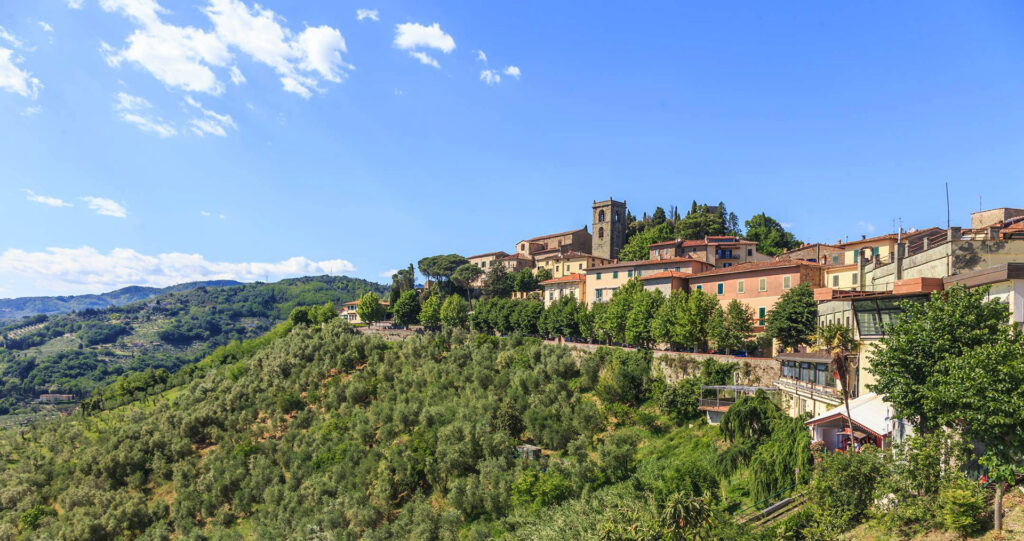
Montecatini Terme is famous for its thermal waters with therapeutic and regenerating properties, but that’s not all. In fact, besides its historical centre with elegant Art Nouveau buildings, restaurants and shops, it is also surrounded by hilly Tuscan countryside with vineyards and olive groves. This makes the surrounding area ideal for outdoor activities, such as trekking, cycling, and wine and food tasting.
Discover a unique territory
Experience Montecatini Terme, where tradition, culture, and wellness come together to create an unforgettable experience. We look forward to seeing you!
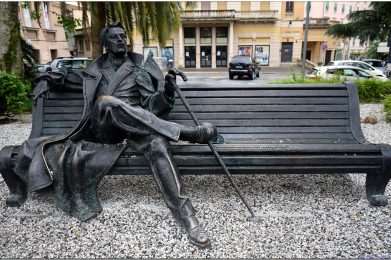
Music – the great artists of history and the events
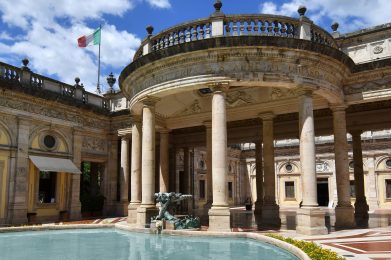
Art Nouveau and the 1900s in Montecatini
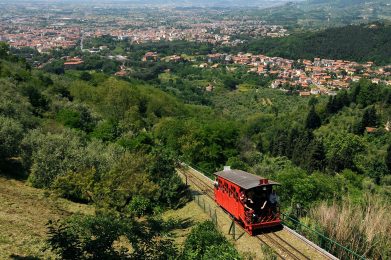
An ideal day in Montecatini Terme
Upcoming events.
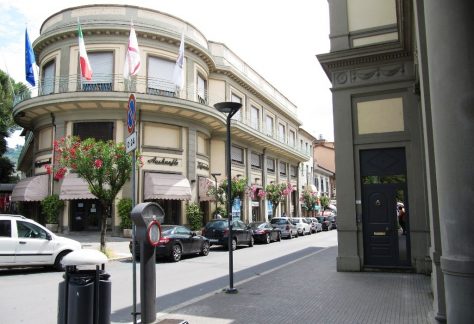
IAT MONTECATINI TERME – TOURIST INFORMATION AND WELCOME POINT 2023/2024 Daily
Must see places.
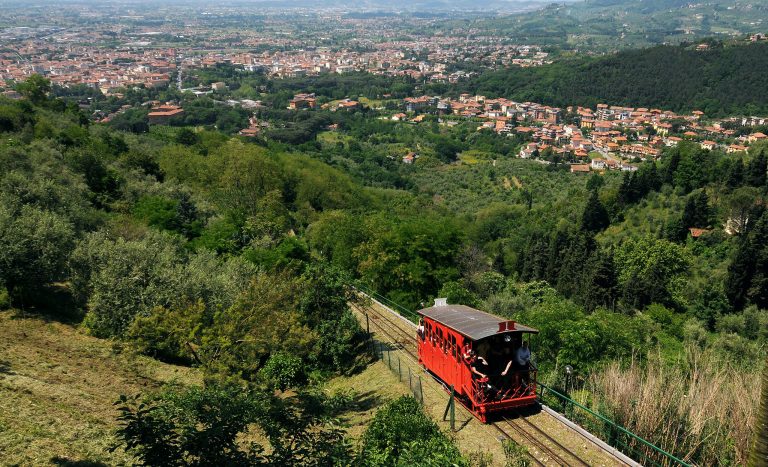
Funicular to Montecatini Alto
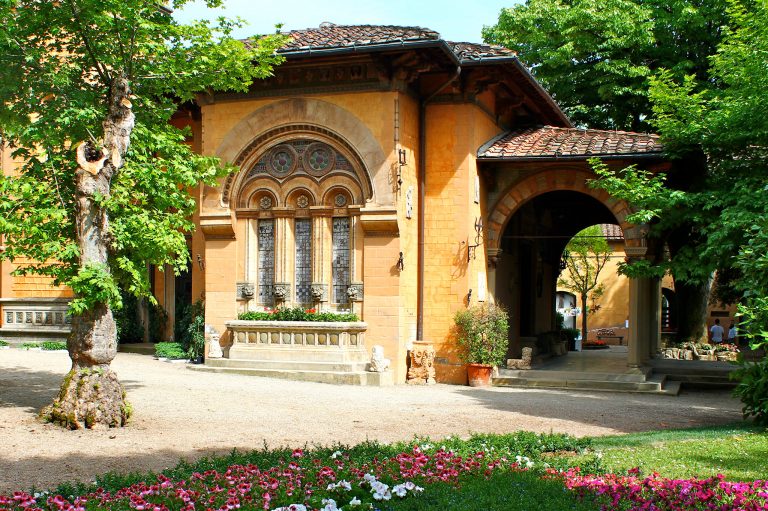
Tamerici Thermal Spa
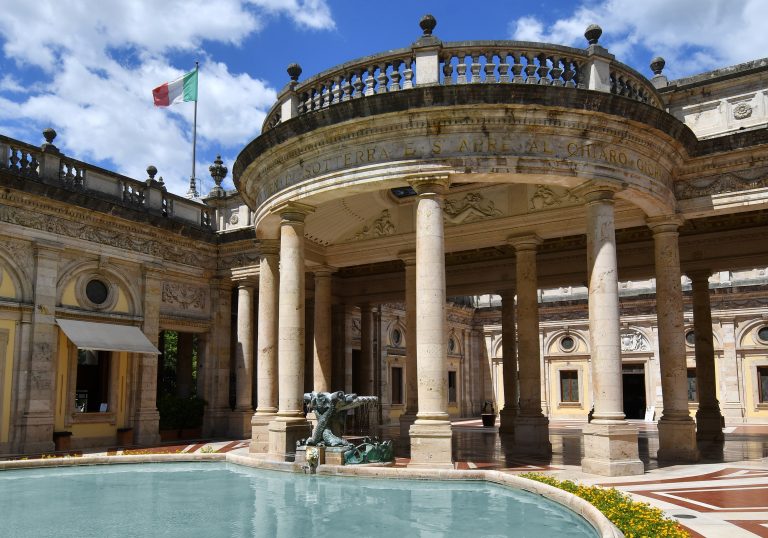
Tettuccio Thermal Spa
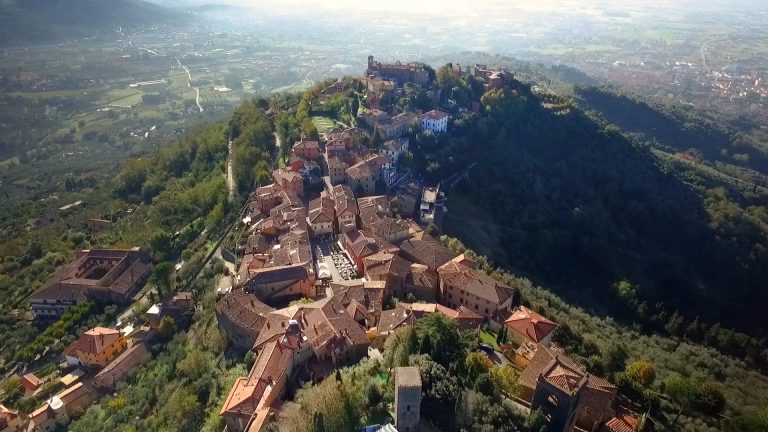
The medieval village of Montecatini Alto
Plan your visit to montecatini.
Sign up to stay updated on our initiatives!
I agree to receive your newsletters and accept the Privacy Policy .
Things to do in Montecatini Terme
Montecatini Terme: the born of an international hot spring resort town
Montecatini Terme is one of the most renowned spa resorts in Italy. Located in the heart of the Valdinievole in the Province of Pistoia, the city represents one of the major tourist centers in the area.
The history of the thermal baths of Montecatini begin in the second hal of the 18th century. In that period the ruler of the Granducato di Toscana was the Granduca Pietro Leopoldo ; he is very important in this story because he conducted the necessary reclamation work in the area of Valdinievole . These works were fundamental to the development of the city that at the end of the 18th century was structured along the major avenues as we can see today.
Montecatini Terme acquires the role of prestigious health resort in the early 1900s. This is the period in which rise of large hotels and facilities related to recreation and relaxation. We are at the beginning of the twentieth century and the most popular style is what in Italy is called Liberty (art nouveau); and in fact in Montecatini we can still appreciate numerous buildings marked by the grace and elegance of the art nouveau style.

The waters of Montecatini
The thermal baths of Montecatini are fed by four springs that arise underground at a depth of over 60 meters. From each of these springs a water with its own characteristics flows, different from the others, so much so that they have been given four distinct names: Leopoldina, Regina, Tettuccio and Rinfresco. Acqua Leopoldina is used for hydropinic treatment thanks to its ability to purify the gastrointestinal tract; Acqua Regina serves above all to treat biliary tract dysfunctions and liver failure; Acqua Rinfresco promotes diuresis, the elimination of waste and the restoration of mineral salts; and finally, Acqua Tettuccio is effective in purifying the liver and acts on the gastric mucosa promoting digestion.
Things to do and things to see in Montecatini Terme: monuments and spa resorts
Montecatini Terme has everything you need to guarantee a funny and relaxing holiday. The spas are flanked by the numerous clubs, restaurants and discos highly appreciated by young people, shopping in the streets of the center and the many events that take place throughout the year, especially on weekends.
The city, however, is not only an oasis of relaxation and fun but also a beautiful place to visit, with many interesting things to see:
Parco Termale
Terme tettuccio, funicular to montecatini alto.
We begin our visit from the main square, Piazza del Popolo , that is located near the train station Montecatini Centro. From the square starts viale Verdi , the city’s main road axis; along this nice boulevard we find all the main monuments and the spas of Montecatini.
After the very first stretch of the avenue you’ll reach the Palazzina Regia (1783) commissioned by Pietro Leopoldo and the Palazzo Comunale inside which the Montecatini Museum of Contemporary Art is located.
The MO.C.A. (Montecatini Contemporary Art) was inaugurated in 2012 as the first civic gallery in Montecatini. Inside you can admire works by world-renowned artists such as Pietro Annigoni and Joan Mirò. The MO.C.A. in addition to hosting a permanent collection, it is often home to temporary thematic exhibitions.
For all information on timetables, tickets and exhibitions, I refer you to the museum’s official website .

Continuing on the final stretch of viale Verdi is the Excelsior , the first of the spas, the Terme Leopoldine (1777) and the spas Tamerici (1901) and Regina (1920s). A little further on, at the end of the Avenue, we arrive at the monumental Tettuccio built in neoclassical style in 1779. Another spa, the Terme Redi , is located in viale Alessandro Bicchierai.
From the avenue you can also reach the Parco Termale , a real green lung of Montecatini. The park is located near all the main spas (the Tamerici spa is located directly inside it) and represents a further magnificent opportunity for recreation and relaxation within the city. The Parco Termale is used as a location for sporting events and various initiatives and it’s also the house of the Città di Babbo Natale (City of Santa Claus) which attracts a large number of visitors during the Christmas period.
The spas of Montecatini are all very beautiful and of a high standard, in fact their fame speaks for itself; however, there is one that perhaps stands out for its majestic architecture: the Tettuccio spa.
Known as “Bagno Nuovo” since the 14th century, the thermal baths owe their name because of a canopy (“tettoia” in italian) that covered the first spring. The magnificent building that we can admire today was built on a project by the architect Gaspero Maria Paoletti between 1779 and 1781 and renovated by Ugo Giovannozzi between 1916 and 1928 following the model of the Roman baths. This amazing complex is characterized by a large monumental entrance, imposing colonnades, Carrara marble statues and many decorations of all kinds. Spas like these, you will find them only in Montecatini!

At this point you should take the funicular to go up to Montecatini Alto . The funicular station is located in Viale Diaz, just beyond the headquarters of the Museo di arte contemporanea dell’Accademia d’arte “Dino Scalabrino” . This museum has a large collection of works produced from the nineteenth century onwards by both Italian and foreign artists.
The funicular that connects the two Montecatini dates back to 1898 and is therefore the second oldest in Italy, after that of Naples which dates back to 1880. Climbing aboard its red trains it will seem to you to take a dip in the past: there isn’t a more romantic way to reach Montecatini Alto!
For timetables and prices, I leave you the link to the funicular website.

What to see around Montecatini Terme
Montecatini is located in the province of Pistoia , a very variegated area that ranges from the Valdinievole to the mountain. In this area of Tuscany there are many interesting places to visit like the other spa town in the area, Monsummano Terme , and some medieval hamlets like Pescia and Cutigliano .
How to get to Montecatini Terme
By train : Montecatini Terme is easily reachable with regional trains both from Florence and from other Tuscan cities such as Pistoia and Lucca. If you come from outside the region, for example from Rome, you can reach Florence with a high-speed train and then take a regional train.
By car : to reach the city by car you will need to take the A11 Firenze – Mare motorway to the Montecatini Terme exit.
You might also be interested in...

What to see in Larciano in the province of Pistoia

Guide to the discovery of Serravalle Pistoiese

What to do in Uzzano

Abetone, the Tuscan mountain

Montecatini Terme

- 2 Get around
- 3.1 History
- 3.2 Geography
Montecatini Terme is a city in the County of Pistoia in Tuscany . Often defined as garden city due to the presence of imposing thermal and public parks, it is renowned in the world for its thermal waters (springs), that are good for gastrointestinal processes and for cholesterol. Most of its thermal and historical buildings are in Art Nouveau style, some are decorated by Galileo Chini, the most famous Art Nouveau artist in Italy. Montecatini Terme is one of 11 "Great Spa Towns of Europe", a transcontinental UNESCO world heritage site .
Get in [ edit ]
You can arrive to Montecatini Terme by
- Car: A11 highway Exit Montecatini Terme)
- Train: a train every ½ hour stops in the 2 train stations: 43.8813 10.7704 1 Montecatini Centro , 43.8794 10.7805 2 Montecatini Terme-Monsummano ) on the railway line linking Florence and Lucca
- Bus: the public transportation operated by Blu Bus [dead link] links Montecatini Terme within the city, Valdinievole, Pistoia and other cities in the nearby)
Get around [ edit ]
Walking is the best solution, considering that the touristic part of the town is 1.5 km (0.92 miles) wide.
Montecatini Terme is included in a lot of mountain bike and cycling tours and itineraries, as well as trekking itineraries, linking the area and the rest of Tuscany. An app [dead link] is available for the major trekking and cycling paths.
Understand [ edit ]
History [ edit ].
Montecatini Alto was the original village: documents state that it's been on top of a hill of 300 m overlooking Valdinievole since the Roman empire, due to its view over the valley. During the Middle Ages, Montecatini Alto was strategically important due to the presence of salts in its land and its position between Florence and Lucca. By the 16th century, the Padule marshlands, which had covered all of Montecatini Terme, had been drained. Later on the thermal springs became the most important business for the area: the Grandduke Leopoldo of Tuscany made this the most important thermal spa in the world.
The Tettuccio Terme was built in the late 18th century by the Grand Duke of Tuscany, Leopold of Habsburg-Lorraine, the son of the Austrian Empress Maria Theresa. The first three spas that were built were the Tettuccio, the Regina and Leopoldine. These spas made Montecatini Terme famous all over Europe, and a favorite place for the rich and the royalty. Famous visitors included Giacomo Puccini, who composed part of La Boheme here, and Giuseppe Verdi, who spent his holidays here for over 29 years and inaugurated the Funicolare.
Geography [ edit ]
Montecatini Terme is in the Valdinievole, the south Valdarno area (the land of Leonardo da Vinci) which is part of the province of Pistoia . The area has been marshy ever since the Roman age, as noted by Tito Livio and Annibale, with thermal springs that are extremely rich in minerals and salts and well known for their healing effects. Romans underlined the "holiness" of these waters.
See [ edit ]

Tuscany has many thermal spas. The largest and most famous of them is Montecatini Terme.
Montecatini Terme is a beautiful town that was built around its mineral water springs. The spring water is considered to help people with trouble with the stomach or liver. Healthy people can enjoy the old time grandeur of the town, stroll in the park or enjoy spa treatments in the various hotels.
The most famous spa in town is the Tettuccio Terme located on the main street of Montecatini Terme - Viale Verdi, next to the park. on the same street you can find the municipality building and the tourist information center.
These days the spa treatments have advanced and they include many modern methods of massage, mud pack treatments and hydrotherapy.
Do [ edit ]
- Go to the Tettuccio Spa building to admire the liberty architecture and plants from all over the world, or Excelsior spa building, or Redi Spa building to have a treatment (mud, termal-water massages, beauty and relax). General Address: Terme di Montecatini Viale Verdi, 64 ph +39 0572 7781
- Funicular , Viale Diaz, 22 , ☏ +39 0572 766862 , [email protected] . Take the 1898 cablecar to Montecatini Alto. The historic part of this medieval "borgo" offers a spectacular view over Montecatini Terme and a typical square full of inviting restaurants and pubs. Funicular is open between 1 April and 1 November every year. ( updated May 2019 )
- Hike on the hill of Montecatini Alto, or bike around the city: download the apo on outdoor activities in Montecatini Terme (free download) [dead link]
- Listen to a classical music concert of the "Estate Regina" festival
- Eat Cialda di Montecatini, the special sweet of the city: the Cialda di Montecatini is a wafer cake to be eaten with ice cream or with Vin Santo, available in shops and in restaurant throughout the city
Buy [ edit ]
- Montecatini Terme and its shops attracts many visitors coming just to have a walk in the commercial streets of the town-centre (Corso Matteotti, Corso Roma, Viale Verdi, Viale 4 Novembre...). It's easy to stand in front of the many boutique windows in a daze.
- Cialde in a can. A typical biscuit that preserves freshness for long time: perfect for a gift!
- Souvenirs can be found in the Grocco Market or in Montecatini Alto (upper town).
Eat [ edit ]
A must is to taste the "Cialde" the Montecatini Terme biscuit made with just almonds and sugar into two thin wafers - about the size of a Chinese pancake, and reminiscent of the very best quality ice cream wafers. Available in boxes, along with other specialities such as pan forte, from impressive patisserie, Giovanini, just off main square.
Here are some typical and popular dishes of the Valdinievole area
- First courses:
Farro soup, Pappa al Pomodoro, Ribollita, Farinata, Maccheroni sull'Anatra Muta, Pasta e Fagioli, Pasta e Ceci.
- Second courses:
Trippa, Fegatelli nel Lardo, Baccalà alla Livornese, Cioncia, Tordi sott' olio. Side dish: Fagioli all'Uccelletto.
- Desserts: Castagnaccio, Necci con ricotta, Brigidini, Buccellato, Cantuccini, Befanotti Glassati
- Angela Chiado , 924 Jefferson NE .
Drink [ edit ]
Vin Santo: sweet wine, the one drunk by the priest during the Mass.
Enjoy a cocktail or an aperitif in a best locations with music: at the "bar storico" in the Tettuccio spa or in the Gambrinus open gallery. Refresh in the Montecatini Alto square after a walk to the "rocca" fortress or along the walls.
Sleep [ edit ]
- Grand Hotel Panoramic , Viale Mario Bustichini, 65 , ☏ +39 0572 78381 , [email protected] . The Grand Hotel Panoramic is 10 minutes on foot from the centre of Montecatini Terme, in a peaceful and quiet environment in the green area of the town. It features a little spa area, a private garden, a wide pool, a restaurant, rooms and suites for families and couples. The Wi-Fi is free, breakfast is complimentary. ( updated Dec 2018 )
Go next [ edit ]
Nearby art-cities are easily reachable by bus or train but if you like the quiet medieval towns and villas around Montecatini Terme, the only solution is by car. Trains take approximately 30 minutes to Lucca, an hour to Pisa (usually involving a change at Lucca) and Florence.
Few travel agencies organize day trips. Consider them if you are without (rented) car and want to visit San Gimignano (many changes by public transport). There are daily trips in the season to locations such as Florence, Lucca, Siena/San Gimingnano, the coast, and local wine tastings: details from Tourist Information Centre, or leaflets in hotels.
- Grotto of Monsummano - A lime cave with hot rooms and a steaming lake that are considered to cure people who enter it. "Grotta Giusti" also provide a big outdoor thermal swimming-pool and other spa-treatments.
- UNESCO World Heritage Sites
- UNESCO tag to be fixed
- Has custom banner
- Has map markers
- Articles with dead external links
- Do listing with no coordinates
- Eat listing with no coordinates
- Sleep listing with no coordinates
- Has Geo parameter
- Pistoia (province)
- All destination articles
- Outline cities
- Outline articles
- City articles
- Pages with maps
Navigation menu

Montecatini Terme: a historical thermal centre in Tuscany
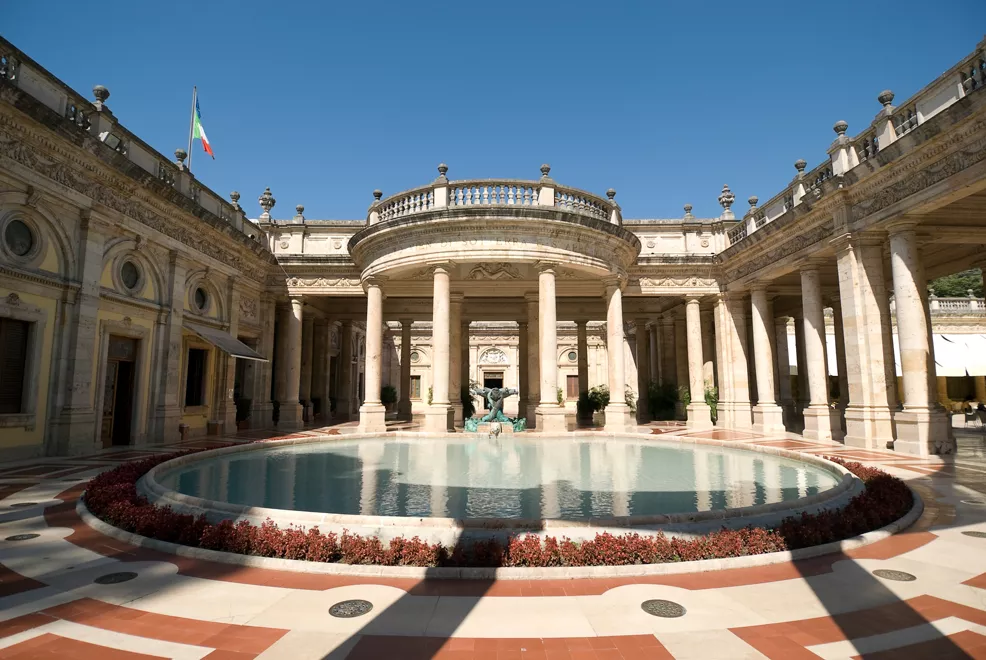
Among the Italian jewels recognised as a UNESCO World Heritage Site is one of Europe's great spa towns, Montecatini Terme , in the heart of Tuscany , surrounded by art cities such as Florence , Pisa and Lucca . Beautiful and easy to get to.
What is Montecatini Terme and where is it located?
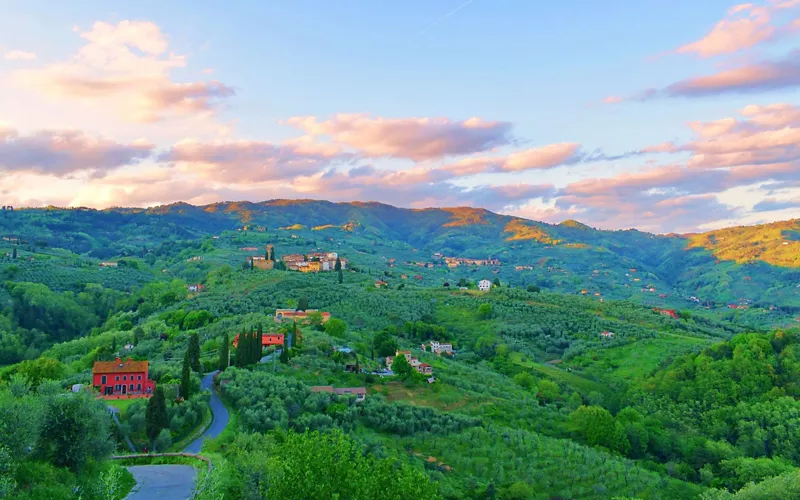
Montecatini Terme is a garden city set in the picturesque Valdinievole , an amphitheatre of green hills in the heart of Tuscany.
Renown all over the world for its rich thermal springs that were already exploited in Roman times. Today Montecatini Terme is one of the most popular and visited spa towns in Italy , thanks to the substantial architectural interventions carried out at the beginning of the 20th century, which enriched it with elegant Art Nouveau and neo-Gothic palaces that frame the Thermal Park.
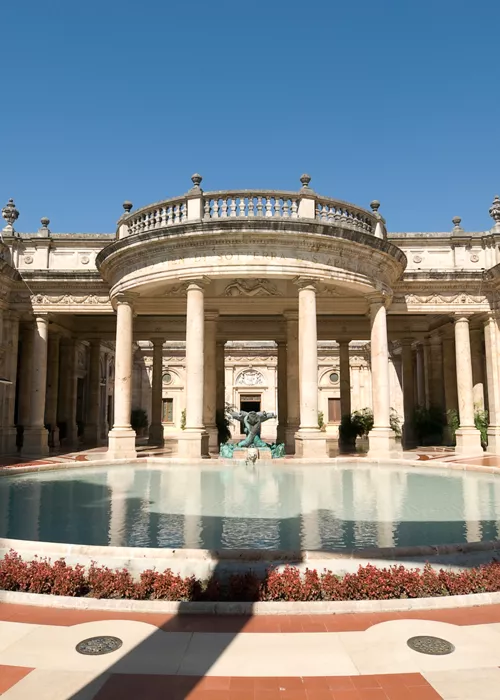
Montecatini Terme
History and information on montecatini terme.
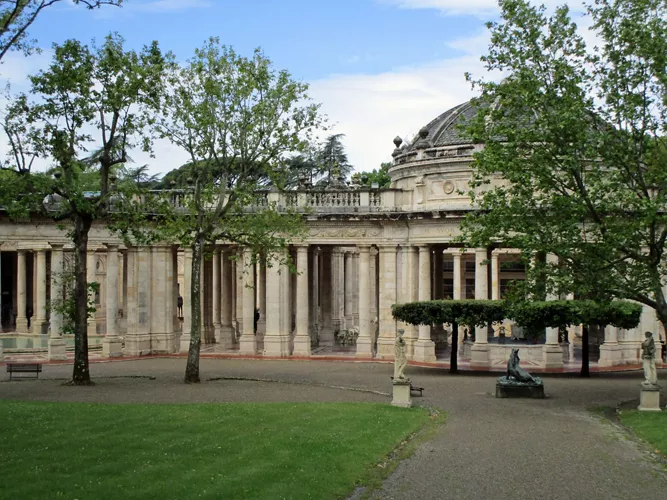
The splendour of Montecatini Terme began in the 18th century thanks to the far-sightedness of Grand Duke Pietro Leopoldo of Lorraine , who had the canalisation of the thermal mineral waters started and developed the concept of a modern spa town . In those years, the Bagno Regio , the Terme Leopoldine and the Tettuccio were built.
Montecatini thus turned into a thermal paradise that hosted more and more illustrious personalities such as Giuseppe Verdi, Giacomo Puccini and Vittorio Emanuele II.

Why Montecatini Terme is a UNESCO site
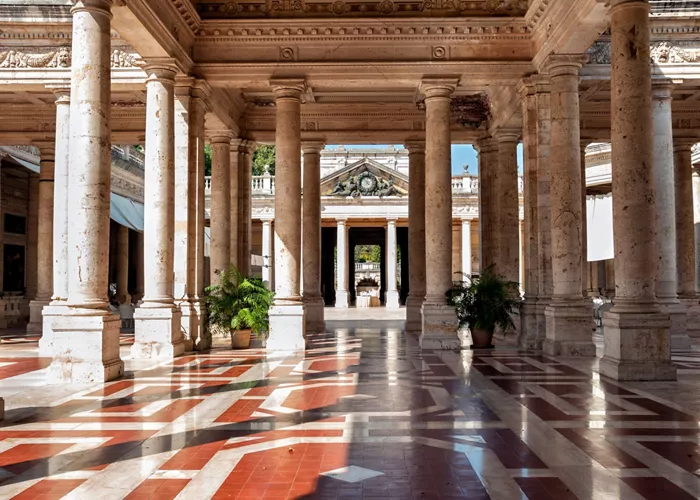
Montecatini Terme is one of the Great Spa Cities of Europe recognised as a UNESCO World Heritage Site in 2021 along with Bath in the United Kingdom, Vichy in France, the German cities of Bad Ems, Bad Kissingen and Baden-Baden, Spa in Belgium, Baden in Austria and the cities of Karlovy Vary, Františkovy Lázně and Mariánské Lázně in the Czech Republic.
The 11 cities were chosen because they are representative of the important European spa phenomenon , active from the 18th century until the 1930s. And Montecatini Terme, with its ancient Tettuccio Spa and more recent Art Nouveau and neo-Gothic buildings, was among the most prestigious locations.
What to see in Montecatini Terme
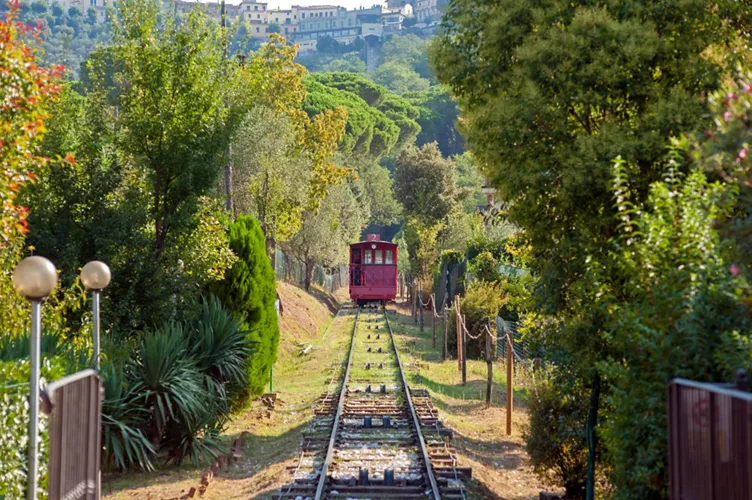
Montecatini Terme can be reached in less than an hour from Florence and Pisa. An ideal destination for those in search of wellness, culture and landscapes of the soul, it offers much, starting with Montecatini Alto . A true historic centre at an altitude of 290 metres, Montecatini Alto is a delightful medieval village built on two hills.
The old town centre can be reached on foot from Montecatini Terme, but we recommend arriving in Montecatini Alto aboard Gigio and Gigia, the two little red trains of the historic Montecatini Funicular . Restored in recent times, it is the most pleasant and romantic way to reach the village of Montecatini Alto, walking through the picturesque valley in 10 minutes while enjoying the beauty of the panorama.
In the centre of Montecatini Terme stands the Palazzo Comunale , now home to the Montecatini Museum of Contemporary Art , which is full of works by world-famous artists and often hosts temporary thematic exhibitions.
On the outskirts of Montecatini Terme, a visit to Grotta Maona , one of the Valdinievole 's natural attractions, is a must. This thousand-year-old natural cave is inhabited by a rare community of bats and is the only one in Italy to have two wells, one entrance and one exit. Over 20 metres deep and 200 metres long, it can be visited every day from April to October in a 20-minute compulsory tour through stalactites and stalagmites.
The jewel in the crown of Montecatini Termine is still the Thermal Park surrounded by greenery. Inside you will find the Terme del Tettuccio , the oldest in the area, consisting of large halls and spaces sumptuously decorated by the most famous artists of the early 20th century. The Terme Leopoldine , built in 1775 at the behest of Grand Duke Leopold I of Tuscany, feature a large thermal crater over 20 metres wide. The Terme Excelsior , on the other hand, are housed in a splendid early 20th century building and are now considered one of the best wellness centres in Montecatini.
If you want to complete the wellness experience of the thermal circuit, you must explore the valley that is home to Montecatini Terme, the junction of three noteworthy food and wine routes: the Valdinievole Oil Road , the Montalbano Wine and Oil Road and the Wine Road of the Lucchesi Hills .
Related articles
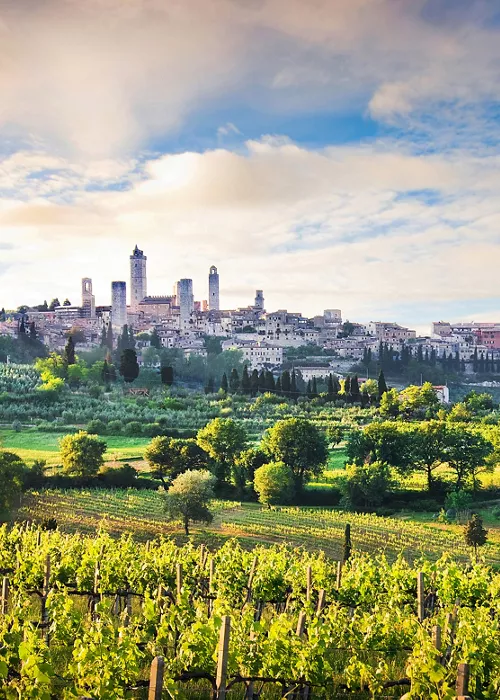
San Gimignano, a journey through the charm of the Middle Ages and the magic of Nature
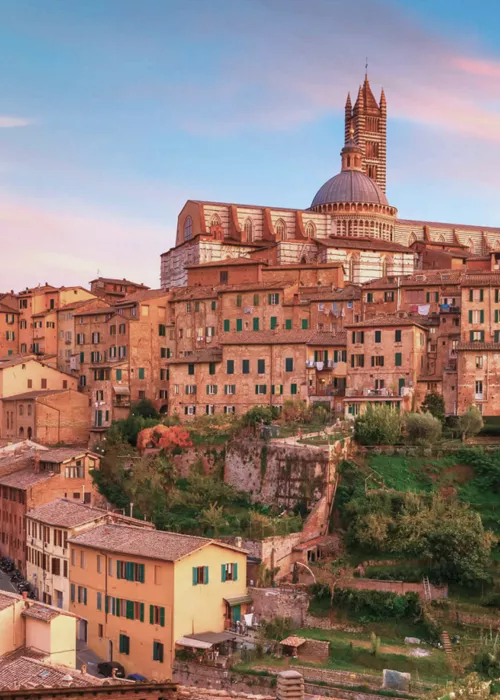
Siena and the low-key charm of the historic centre
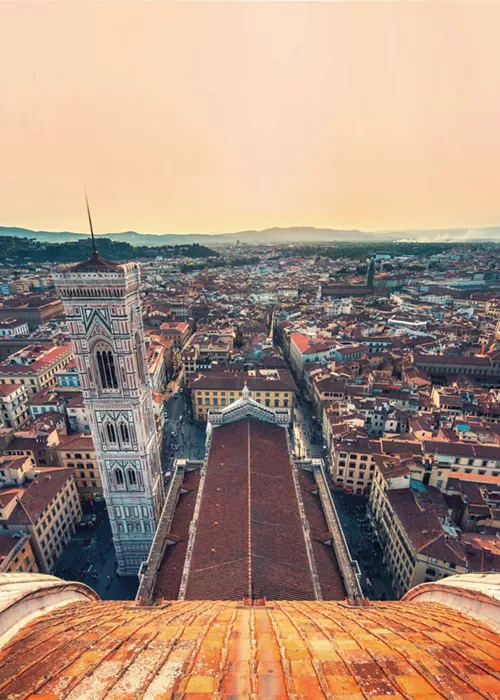
The historic centre of Florence, one of the most beautiful in the world
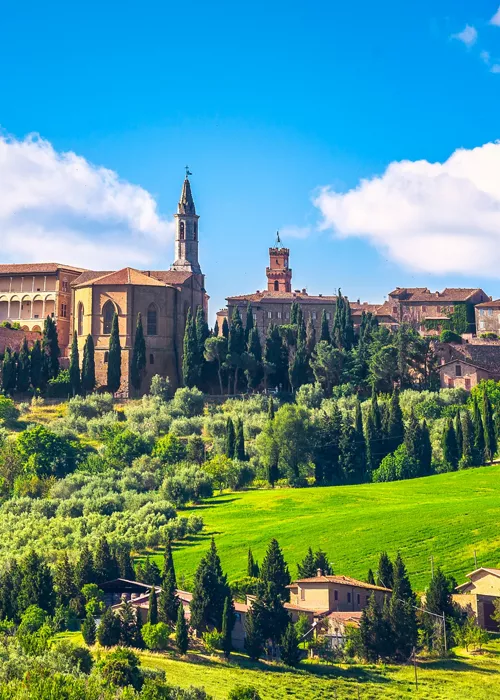
Pienza, the Ideal City
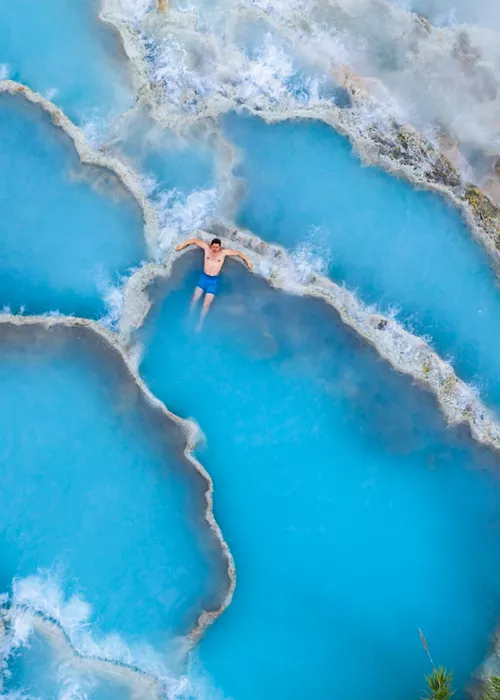
Saturnia and its Terme
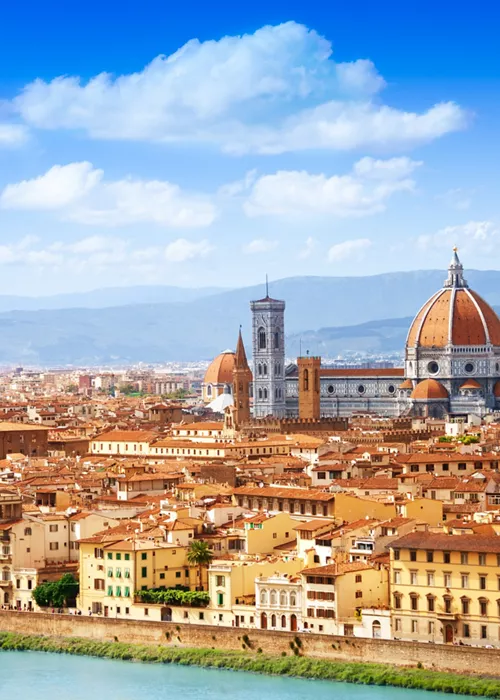
2 days in Florence: the itinerary
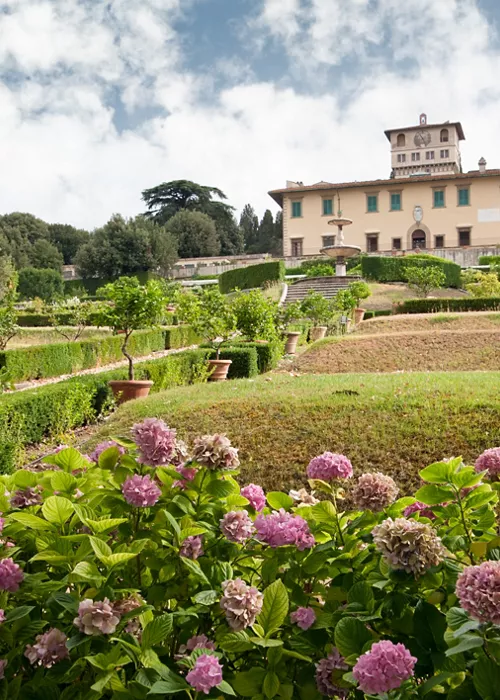
The Medici Villas in Tuscany
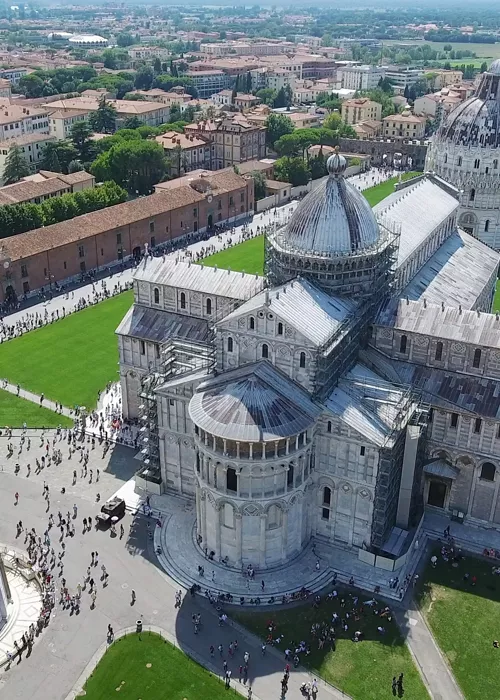
Pisa and Piazza dei Miracoli, jewels of extraordinary beauty
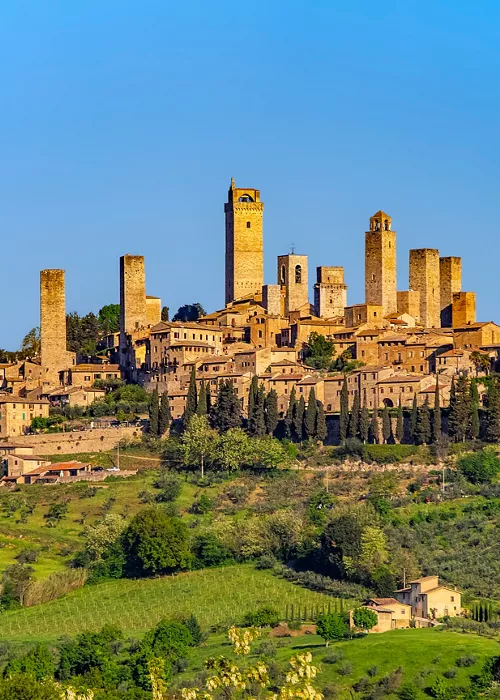
San Gimignano, the city of 14 towers
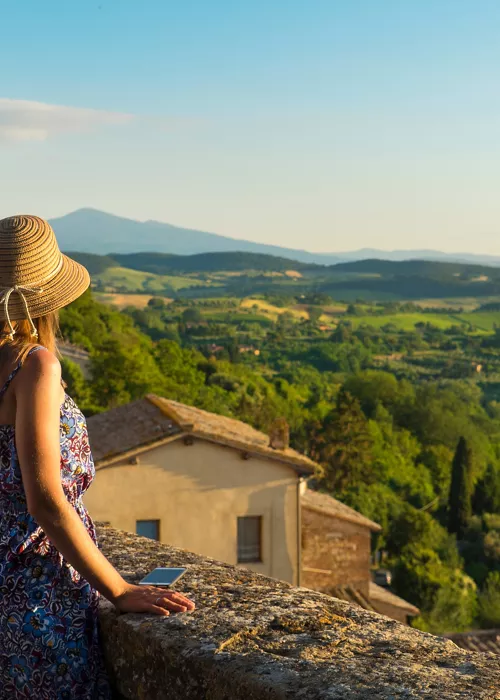
Montepulciano
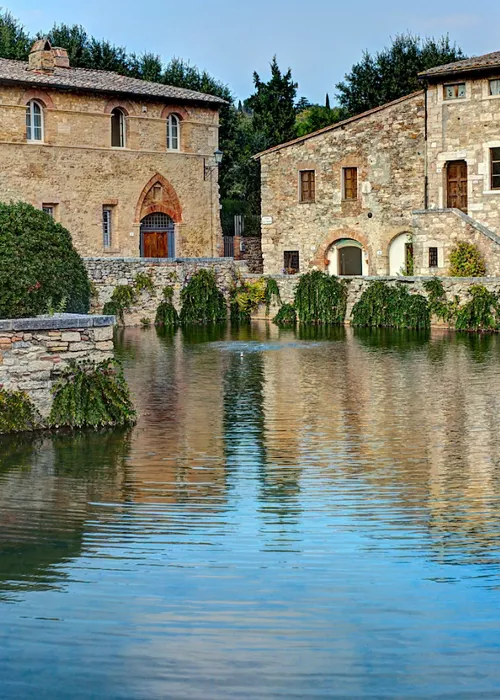
In the Val d'Orcia, in Bagno Vignoni, a land of water and wine
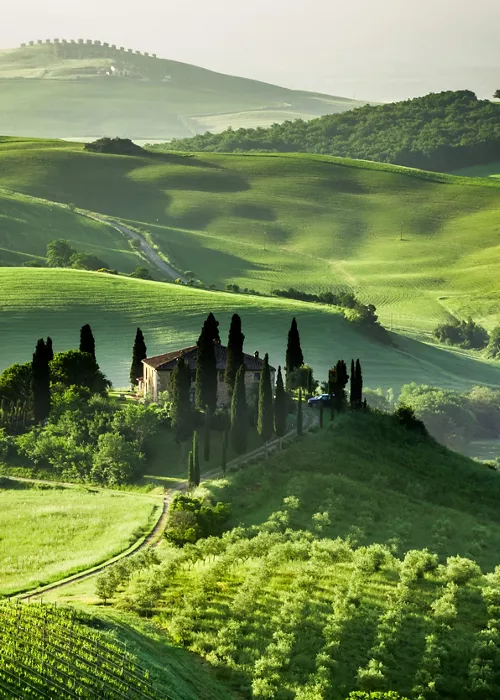
Val d'Orcia: rolling hills among vineyards and medieval villages
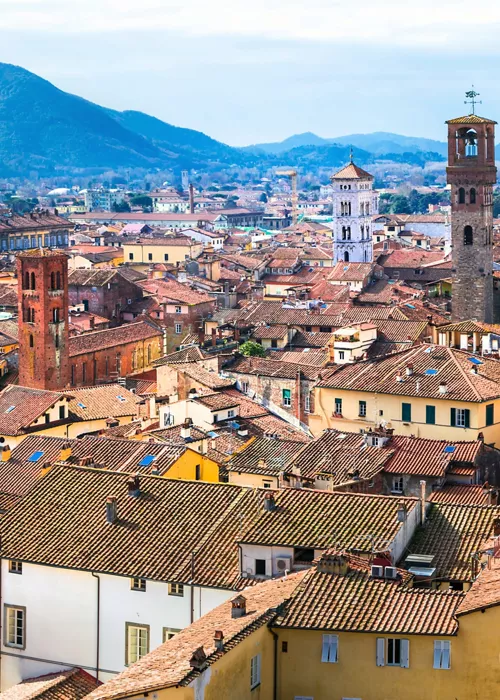
Lucca and the embrace of its mighty walls
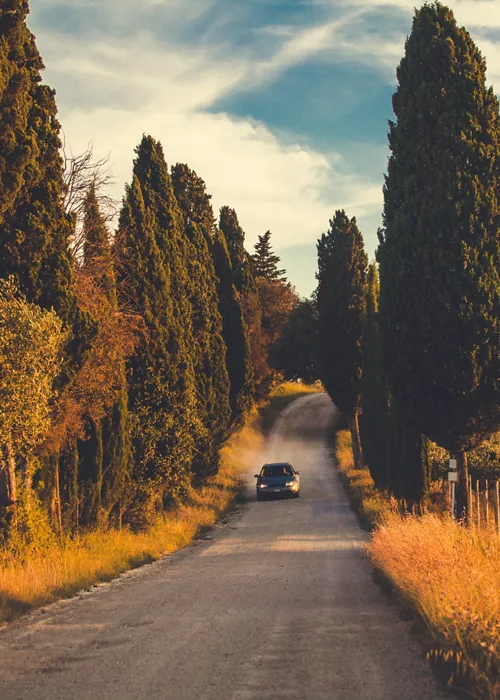
Tuscany by car surrounded by nature, art and unique flavors
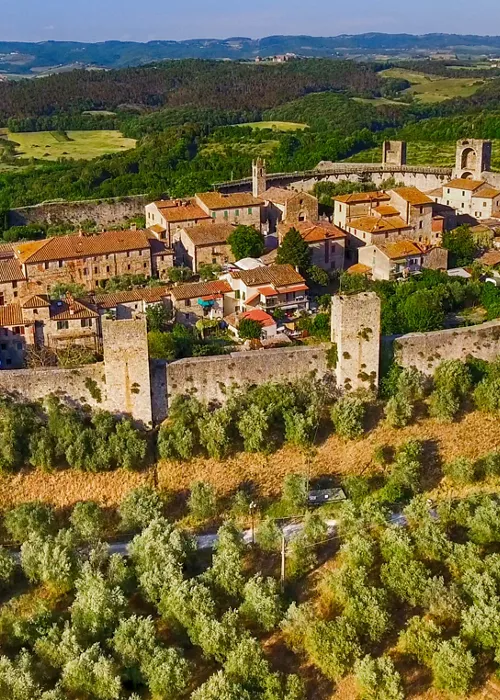
The Via Francigena in Tuscany: where time seems to have stopped
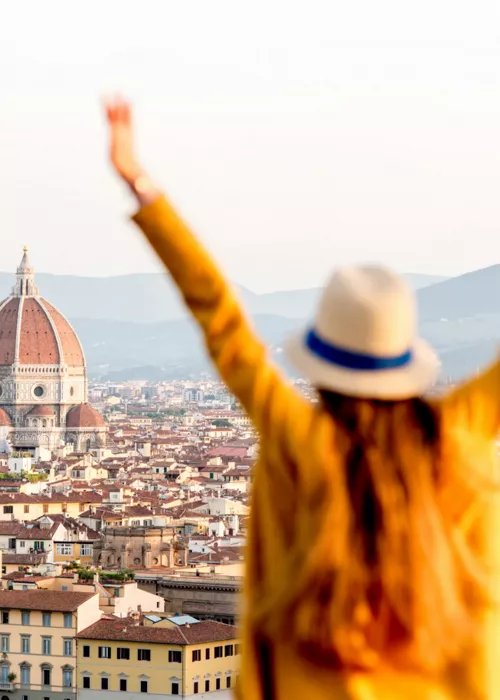
Cities of art, beautiful landscapes and good food: Tuscany is every tourist's dream destination
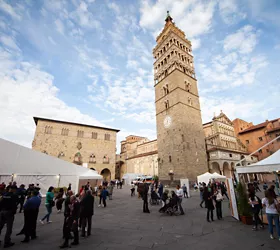
The Pistoia Dialogues
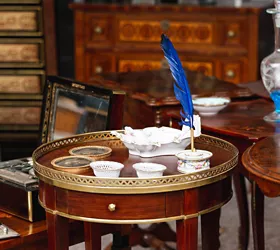
Arezzo Antiques Fair

Continue living like an Italian
Subscribe to the Newsletter so as not to miss places, events and experiences for experiencing the best side of Italy: the authentic one.
Keep up to date
Would you like to learn about the most authentic experiences to be had in Italy, stay up to date on the most interesting events, discover our special offers and receive lots of insider hints and tips?
Save your favorite places
Create an account or log in to save your wishlist
Do you already have an account? Sign in
Montecatini Terme
- Montecatini Terme – the main spa resort in Italy
- Where to stay in Montecatini Terme – hotels and spa hotels
- How to get to Montecatini Terme. Airports, railways, and motorways
Rest and treatment in Montecatini Terme and Monsummano Terme
- Montecatini Terme – the main water therapy and spa resort in Italy
- History of Montecatini Terme
- Resort description – all baths of Montecatini Terme
- Treatment – all Montecatini Terme waters
- Thermal cave “Grotto Giusti” in Monsummano Terme
Terme Montecatini – the main thermal and spa resort in Italy Tuscany , a perfect region of Italy , and a land of great cultural history, wine hills, warm sea, and high mountains also boasts the fame of the most “thermal” area on the Apennine Peninsula. Tuscany has the largest number of Italian thermal and spa resorts , thirty-nine to be precise. The most well-known of them are Bagni di Pisa in San Giuliano Terme, the Baths of Val d’Orcia , Saturnia , and many others. But the main place for rest and spa treatment in Tuscany and Italy , in general, remains the Montecatini Terme balneological resort, one of the most famous therapeutic resorts in Europe . Montecatini Terme is located halfway between Florence and the cities of Lucca and Pisa in the province of Pistoia . The healing properties of Montecatini waters were known back in ancient times. In the Middle Ages, local baths were renowned throughout Italy, but the current luxurious thermal city only appeared here in the 18th century. Nowadays, Montecatini Terme is not a “ hospital-type ” sanatorium where taking procedures in a sanatorium block and eating in a local canteen are mandatory attributes.
Spa guests undergo treatment right in the thermal baths but at the same time they live a “ normal ” life surrounding by chic architecture going for walks , shopping , restaurants , sightseeing , and wine tours . The most important thing about Montecatini Terme is not to go through tests, see specialists, and take as many procedures as possible although the main purpose of visiting this water resort, in any case, remains treatment. People go here for unequalled thermal waters , for mud therapy and bathing in the thermal pool, for the recovery of the nervous system, for excellent wine and cuisine, and for new cultural and tourist experiences. Montecatini Terme is one of the best resorts in Europe for general health improvement. Here you can cleanse the liver and intestine, decrease cholesterol and blood sugar levels, and improve your psychological condition. Montecatini Terme gives you a very convenient feature: you do not need to take thermal waters all day long. The main treatment is in the morning with some “light” water for kidneys in the evening before your dinner.
History of Montecatini Terme The name Montecatini is now borne by two cities connected by a funicular. These are the medieval town of Montecatini Alto (Upper Montecatini), standing on a high hill, and the resort city of Montecatini Terme , located on a plain at the foot of the hill. The first mention of the town of Montecatini dates to the 8th century AD. In the Middle Ages, despite its dangerous location between the constantly warring Florence and Lucca and the vicinity of vast marshy plain of the Nievole River, a permanent source of malaria fever epidemics, Montecatini grew and developed. In the 13th century, it was surrounded by a powerful fortification wall over a kilometre long, reinforced by 25 towers with 7 gates. Local thermal springs also became increasingly famous – numerous written evidences of medieval physicians about the healing properties of the waters of Montecatini have survived.
The most valuable records dating back to the 14th century were left by Ugolino da Montecatini, a physician who first studied local waters using scientific methods. According to him, there were already three ‘baths’ in Montecatini at that time: the Queen’s Bath (Bagno della Regina), the Bathhouse of Thrushes (Bagno dei Merli), and the New Bathhouse , now known as the Bathhouse under the Awning (Tettuccio). In 1554, Montecatini experienced a historical disaster – it was stormed by the troops of the Grand Duke of Tuscany Cosimo de’ Medici, then the city was devastated, and its fortifications were destroyed – only one of the twenty-five medieval fortress towers has survived in Montecatini. Prior to the end of the 1 8th century , Montecatini was in decline, until it was reborn by the Grand Duke of Tuscany, Leopold I of Habsburg . It was Leopold who could be called the true creator of the current “thermal capital” of Tuscany. The Grand Duke’s scientists and engineers surveyed the area and drew up a project to transform and revitalize the area. In 1772, Leopold I himself visited Montecatini and ordered to destroy the fishponds and dams on the Nievole River and build a network of canals to drain the marshy plain near Montecatini, contaminated with malaria.
By order of the Grand Duke, the architect Paletti and the engineer Bombicci designed and built a real state-of-the-art thermal city with three thermal complexes – Bagno Reggio (1773), Terme Leopoldine (1779) and Tettuccio (1779) located along the Stradone de’ Bagni (now Avenue Verdi). In 1818, the thermal complex was given to the commune of Montecatini, and in the middle of the 19th century, the construction of the railway gave additional impetus to the development of the city. At the beginning of the twentieth century , Montecatini became a fashionable spa resort with luxurious thermae, hotels (at that time the most luxurious local hotel was built – the GrandHotel “LaPace”), restaurants, and casinos, where Italian and European high society gathered for treatment and socializing. The famous local baths underwent serious reconstruction at the beginning of the twentieth century. In 1904-1915, the new thermal complexes Torretta and Excelsior were built in Montecatini (then rebuilt in 1958). The old grand ducal Thermae Leopoldine and Tettuccio were rebuilt in 1919-1928, and in 1958 it was the turn of the famous Redi Thermae.
Resort description – all the baths of Montecatini Terme Recreation and treatment in Montecatini Terme are available all year round, regardless of the season and the weather. The resort thermal complex includes the following thermae located in the magnificent city park: Excelsior – here you can find all kinds of therapeutic procedures – water drinking, mud treatment, balneotherapy, inhalation, spa procedures; Tettuccio – luxurious historical thermae, where hydroponic treatment (water drinking) is performed; Leopoldine – a spa centre with swimming pools, saunas, hydromassage and aromatherapy; Redi – mud treatment, balneotherapy, inhalation therapy and physiotherapy; La Salute – water intake; Tamerici – after reconstruction it is used for cultural events; Regina – exhibitions and conferences are held here.
Treatment Hydropinic treatment (water intake): during the high season (from May 1 to October 1), people take waters in the Tettuccio and La Salute baths, while in late autumn , winter and early spring they do it in the Excelsior bath. Montecatini is a truly universal resort as there are four types of healing water so you can always find an individual, customized combination: Leopoldina is the strongest water in Montecatini Terme, named after Grand Duke Leopold, the founder of the resort. The water is prescribed for treating chronic constipation and has a strong laxative effect. Regina – is prescribed for liver and gallbladder disorders. Regina does not usually have a very strong choleretic effect because it can lead to gallstone passing. Tettuccio is the water that cleanses the liver and normalizes its function. Tettuccio is the lightest water, its chemical composition is similar to the blood. Rinfresco – Montecatini is evening water. Rinfresco is used to cleanse blood and kidneys and restore the body’s salt balance.
The first three types of water – Leopoldina , Regina and Tettuccio – are recommended to be taken on an empty stomach in the morning , followed by a hot breakfast in half an hour. The fourth Rinfresco water is usually taken in the evening . After taking the water, it is recommended to take long walks to stimulate the kidneys and intestines. Montecatini waters are very “ strong ” and should only be used on doctor’s orders. Before starting the water treatment course, it is necessary to obtain a therapeutic regimen from a local doctor , and the course should last at least 7-10 days.
Thermal “Grotto Giusti” in Monsummano In a 10-minute drive from Tuscany’s main water resort, Montecatini Terme, near the town of Monsummano Terme , in a quiet private park there is the famous S pa Hotel Grotta Giusti Tuscany , which includes a 19th century country palace and a wellness centre with its main gem, the huge thermal cave Grotta Giust i. The story of the “Gusti Cave” began in 1849 , when several workers from a quarry owned by the Gusty family near the village of Monsummano accidentally found the entrance to a hole from which hot steam was rising. When they descended downstairs, they found an amazingly beautiful 300-metre cave with stalactites, stalagmites and an underground lake with its curative evaporations. The fame of the “steam cave” and its amazing properties spread throughout Italy and Europe very soon, and the Giusty family arranged several “treatment rooms” in the cave. In 1867 Giuseppe Garibaldi visited the cave, and in 1873 the “ Royal Hotel ” was built there. Giuseppe Verdi stayed in the hotel and called the grotto “the eighth wonder of the world”.
Today, the Grotta Giusti complex in Monsummano Terme is a luxurious spa resort with warm mineral waters. Its main “highlight” is the natural thermal cave , which consists of three halls named after Dante’s “Divine Comedy”: “ Hell “, where air humidity reaches almost 100%, “ Purgatory ” with the beautiful Lake Limb with constantly warm water with the temperature of +36 °C and “ Paradise “. The undiscovered natural mechanism in the cave provides efficient airflow, which makes staying there pleasant despite the highest humidity. During an ordinary 50-minute treatment session in the cave mineral water and its evaporations contribute to detoxification of the organism, recovery of lungs and bronchi and stress relief. Spa guests are also offered additional treatment: intake of mineral water, massage, mud wraps, lymph drainage, ozone baths, aromatherapy, etc.
The spa centre also has a 750 square metre outdoor swimming pool with a waterfall and hydromassage. The building of an old 19th century hotel now houses the four-star Grotta Giusti Resort Golf & Spa 4* , a part of the Small Luxury Hotels of the World chain. It has a business centre and conference rooms for private meetings. The hotel has 58 double rooms and 6 suites, some rooms are supplied with thermal water in their bathrooms. The La Veranda Restaurant serves Italian and Tuscan cuisine, complemented by a low-calorie menu. The Montecatini Golf Club with its 18-hole La Vecchia Pevaccia course is 3 kilometres from the spa hotel
Where to stay in Montecatini Terme – hotels and spa resorts:
. The five-star LHP Hotel Montecatini Palace & SPA 5* is located in an elegant Art Nouveau building dating back to 1910 in the centre of Montecatini on the border of the thermal park area. It offers a restaurant with a veranda, outdoor and indoor swimming pools with hydromassage and chromotherapy, a fitness and spa centre with sauna, Turkish bath, ice room, sensory shower – booking.com
The five-star Grand Hotel & La Pace Spa 5* was built in the late 19th century and is a monument of Art Nouveau architecture. It is located near the main square of Montecatini Terme, just a few steps away from the thermal park area. Many famous films have been shot in its luxurious interiors. It offers indoor and outdoor pools, a modern spa centre with a steam bath, hydrotherapy shower and massage chairs, and a Mediterranean restaurant – booking.com
The five-star Grand Hotel Bellavista Palace & Golf 5* is a historic hotel with luxurious city views located next to the Tettuccio Thermal Centre and the park. All rooms have panoramic views of Tuscan hills. There are 2 swimming pools, a spa and health centre, a restaurant serving national cuisine – booking.com
The four-star Ercolini & Savi Hotel 4* is located in an elegant historic building nearby the thermal complexes and the central square, surrounded by restaurants and shops. This family-run hotel features two gourmet restaurants with a rich wine list – booking.com
The four-star Vittoria Grand Hotel 4* is located on the border of the parking and thermal area in the centre of Montecatini Terme. It offers a terrace, an outdoor pool with hydromassage, wellness and spa centres with sauna and massage, a restaurant and bar – booking.com
The four-star Francia E Quirinale 4* hotel is located in a historic building with classic interiors and Murano glass chandeliers. It offers a restaurant, a swimming pool, a wellness centre with massage services, beauty treatments and ayurvedic therapy – booking.com
The four-star Croce Di Malta Grand Hotel 4* is located next to the thermal park area in the centre of Montecatini Terme. It offers an outdoor pool, a spa with a heated indoor pool and chromotherapy effect. The hotel has a restaurant Le Anfore – booking.com
The four-star Grotta Giusti Resort Golf & Spa 4* is located in Monsummano, a 10-minute drive from Montecatini Terme. The private bathrooms are decorated with marble and some rooms are supplied with thermal water in their bathrooms. The luxurious spa complex of the hotel includes the famous thermal cave “Grotto Giusti”. Montecatini Golf Club with an 18-hole course is located 3 kilometres from the spa hotel – booking.com
Three-star SmArt Hotel Bartolini 3* – a modern small hotel with a great location, restaurant and personal service – booking.com
- Palaces and villas
- Personality
- Short story
- Postcards from Buggiano
- Experiences
- Accommodation
- Neighborhood
- Event calendar
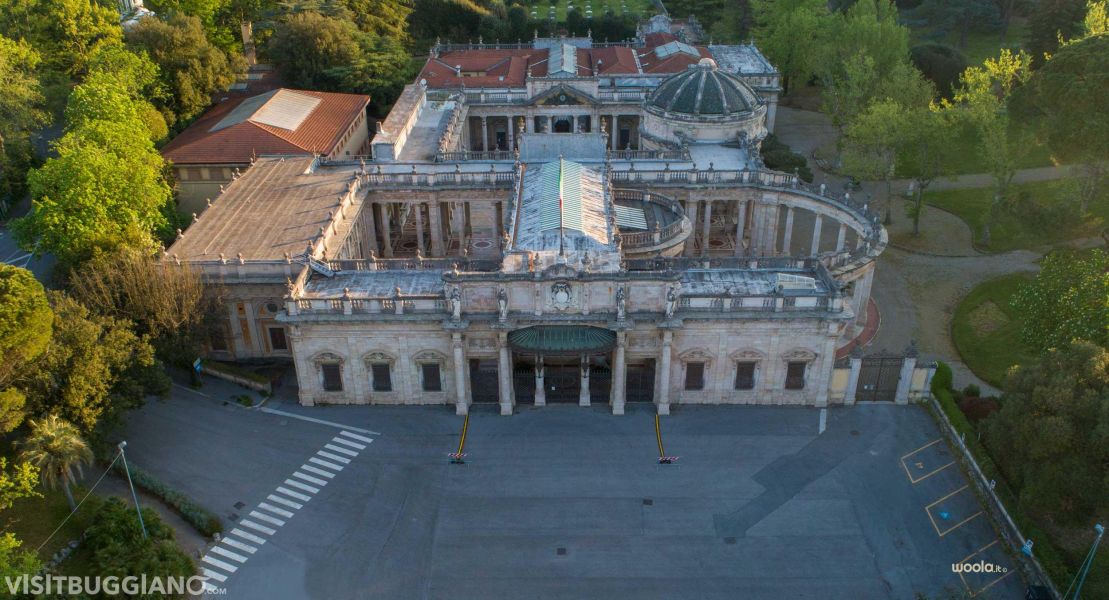
- Montecatini Terme
Montecatini Terme is known and loved for its waters and its Liberty architecture.
The city is full of green spaces and is perfect to discover on foot , in a quiet and peaceful atmosphere pervaded by cultural stimuli.
You can cross and stop in the pine forest after observing the Art Nouveau buildings . Among all, the complex of Terme Tettuccio , built at the end of the 18th century and completed at the beginning of the 20th century, deserves a special visit.
The building is one of the most beautiful examples of thermal architecture with colonnades, fountains, grandstands and is immersed in a park of Lebanon cedars, laurels, wisteria, lime trees, palm trees. The thermal water flows from the Tettuccio spring and is collected in the central pool with a wonderful parapet with seahorses.
In the city there is the civic gallery MO.C.A (montecatini contemporary art), a space where it is possible to admire works by Joan Mirò and Pietro Annigoni and where temporary exhibitions are organized. From Montecatini Terme you can reach Montecatini Alto with the characteristic funicular , built at the end of the 19th century precisely to comfortably join the two places.
Once in Montecatini Alto you can enjoy a boundless panorama towards the entire Valdinievole , but on a clear day your gaze can venture even further. Do not miss a stop in the many rooms overlooking the central square, and a visit to the fortress with the medieval remains of the Palazzo del Podestà.
To reach Montecatini:
Train: from Borgo a Buggiano station, in the direction of Florence, in just 5 minutes.
Car: in a few minutes by car you can reach one of the many parking spaces at the entrance to the city and then move on foot through the streets of the center.
Bar Pasticceria Tentazioni
Happy yogurt e gelato, da sabatino, amici del colle, ristorante villa sermolli, trattoria il mercato, pizzeria aurora buggiano, to eat in buggiano.
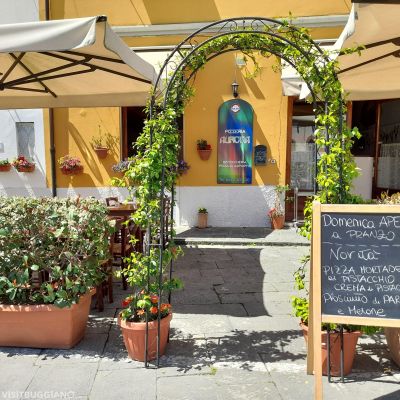
Come a Casa Pizzeria – Guest house
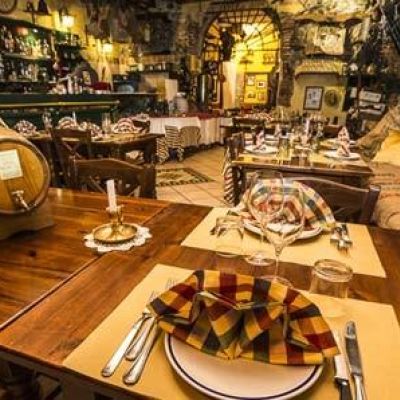
Taverna del Vin Vino
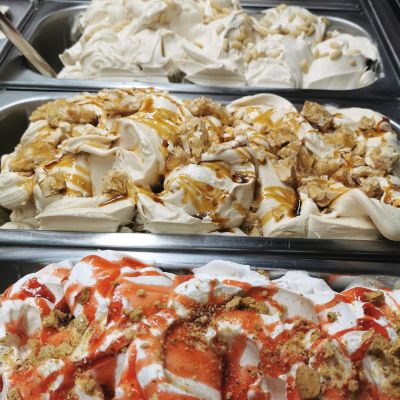
Around Tuscany Osteria

Villa Sermolli
Church of madonna della salute and san nicolao.
- Torrent Cessana
Church of Santo Stefano in Campioni
Church and former monastery of santa scolastica, church of san lorenzo, church of san pietro apostolo o santuario del ss. crocifisso, church of santa maria in selva, oratory of the giglio, to discover buggiano.
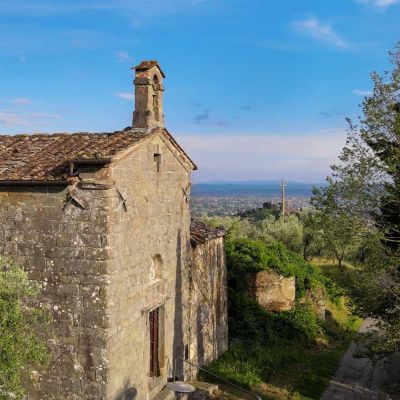
The Doors of Buggiano
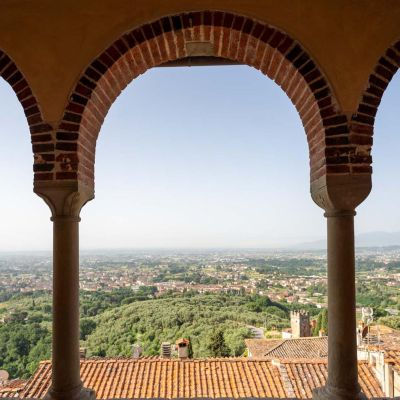
Villa Bellavista
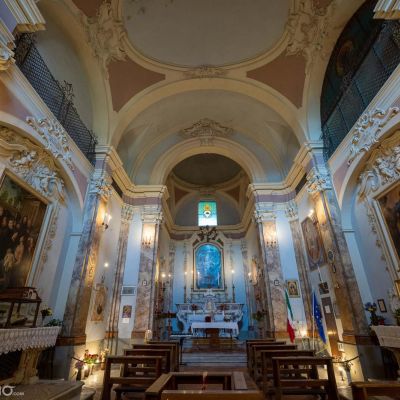
Santa Marta
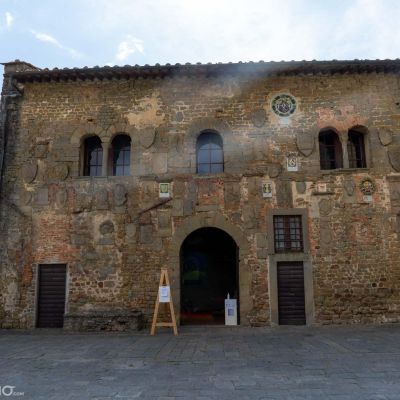
Pretorio Palace
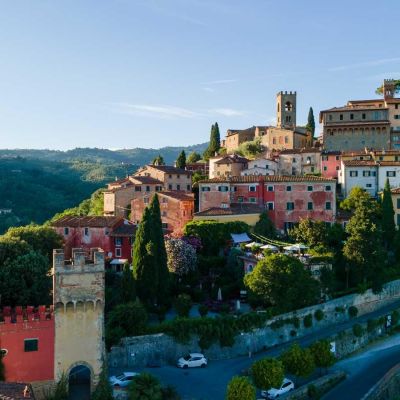
Living Buggiano
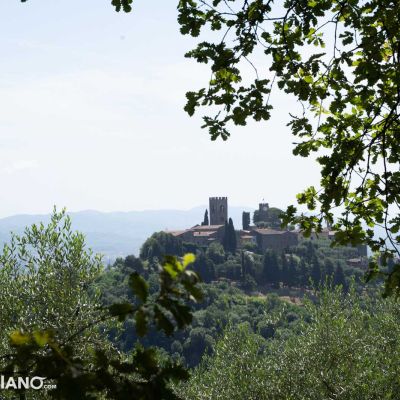
- Trail n°3 – Panoramico
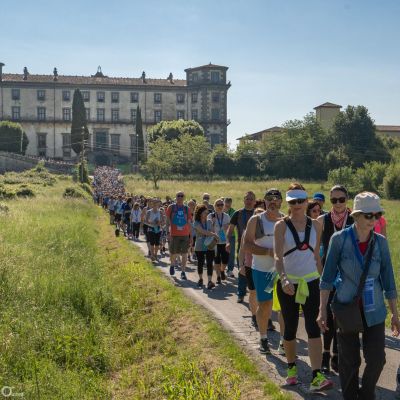
- Sgranar per colli
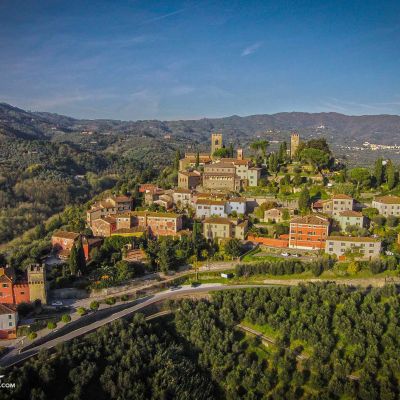
- Trail n°1 – Castelvecchio

Fiera in selva
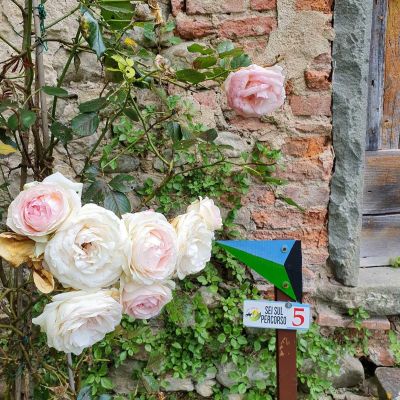
- Trail n°5 – Via dei Borghi
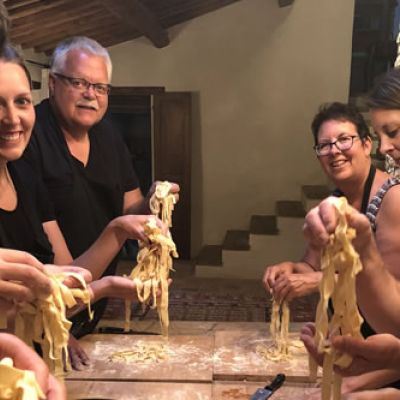
Cooking Lesson in Tuscany
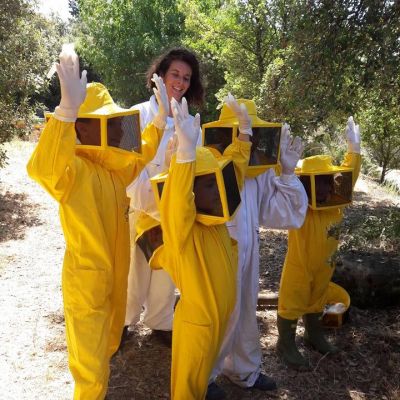
Visit to the Apiary
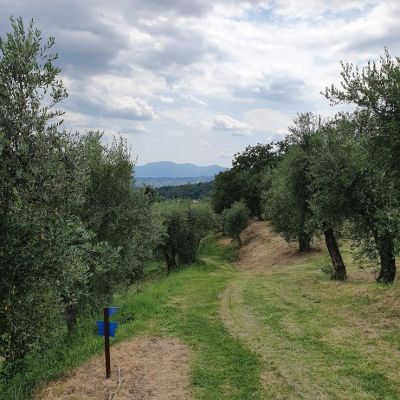
Trail n°2 – Pinetone
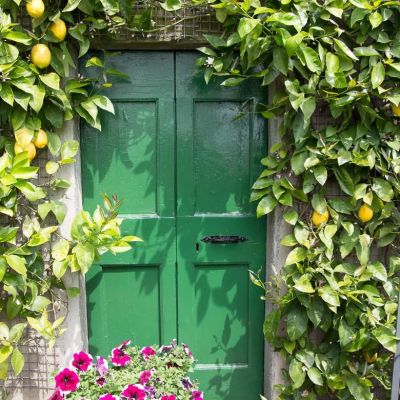
La campagna dentro le mura
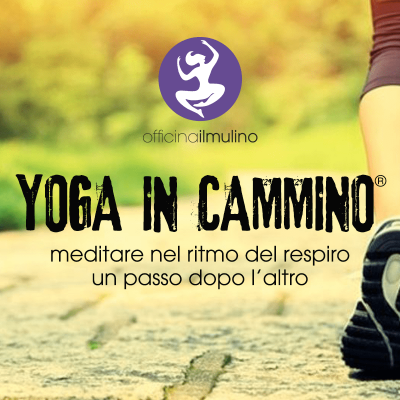
Visit artisan woodworkers Roberta Brizzi
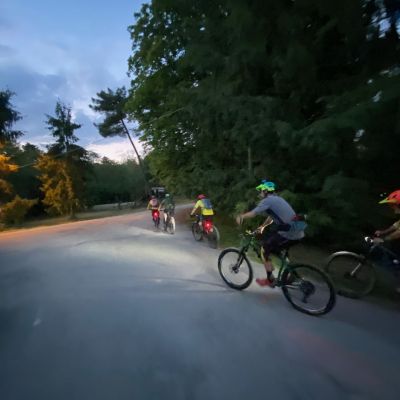
Night MTB in the hills
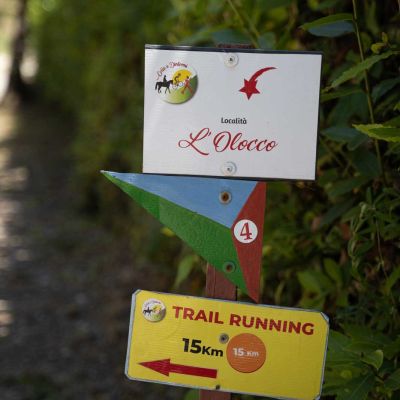
Trail n°4 – La Valle
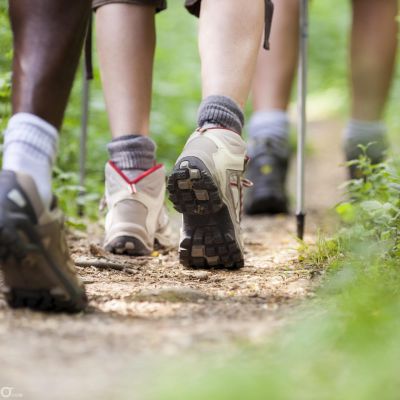
The Way of San Jacopo
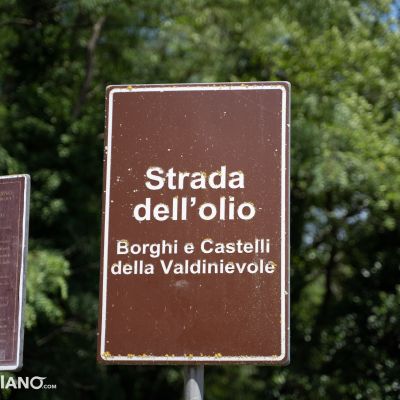
The taste of coffee
Other accommodations.
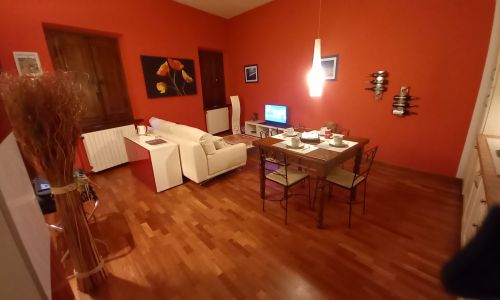
Monastero del Castello
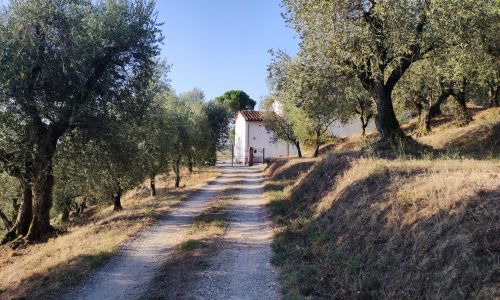
B&B La Piana
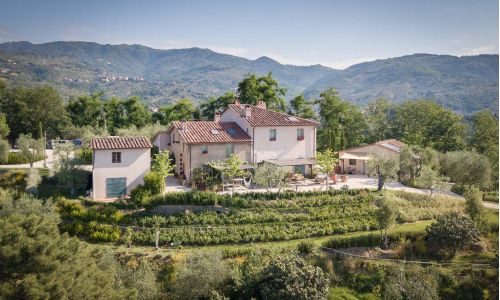
Terre di Cocomo
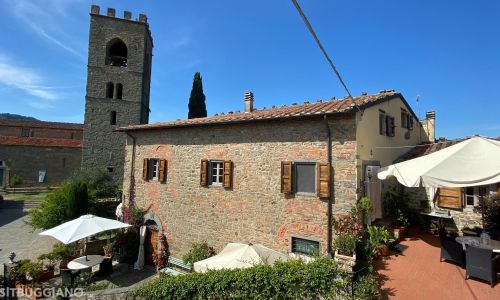
La Magione dei Todaro
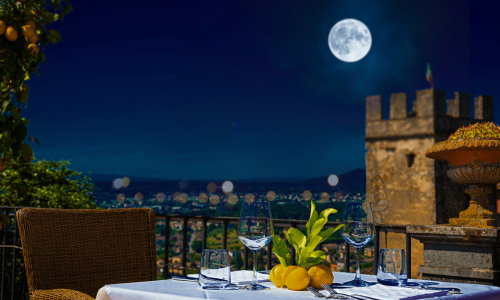
Hotel Villa Sermolli
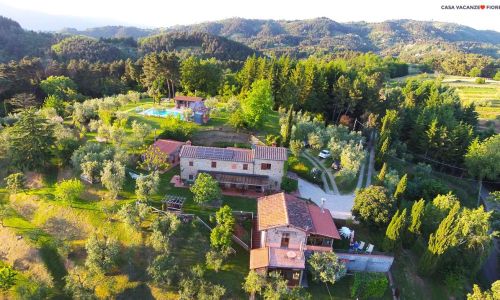
Podere Fioretto
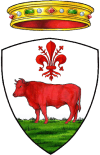
MUNICIPALITY OF BUGGIANO Turism Office
Piazza Matteotti, 1 51011 Buggiano (PT) - Italy Telephone: (+39) 0572.31711 Fax: (+39) 0572.32029

Villages of Buggiano
- Colle di Buggiano
- Buggiano Castello
Within 10 km
- Marshes of Fucecchio
- Monsummano Terme and the Grotta Giusti
- Svizzera Pesciatina
- Montecarlo di Lucca
- The Tuscan seaside
© COPYRIGHT 2021 | PRIVACY POLICY | Cookies
Visit Montecatini Terme
Travel Guide to the Historic Tuscan Spa Town

About Montecatini Terme
Thinking of visiting Italy? Perhaps debating on where to stay and what to see? Well it’s fair to say Italy is a land rich with culture, history, art, food and of course style, so deciding where to stay and choosing a hotel can be difficult. Montecatini Terme is a true Tuscan gem.
Historic Thermal Spa Town
Montecatini Terme, as the name suggests is a Spa town and has long been known for it’s ‘healing’ natural waters at least since the time of the Romans. However, there are claims that the waters were used for their healing properties long before.
With a rich past in health and well-being Montecatini is the place to visit for an authentic Spa experience , with many thermal baths to visit you are spoiled for choice.

Rich Cultural History
After a relaxing Spa day how about enjoying the Arts ? Montecatini was once a stomping ground for many famous visitors, such as the great composers, Giuseppe Verdi and Giacomo Puccini. The legacies of these iconic men live on, with Teatro Verdi in the heart of Montecatini often showing some of their greatest works.
True Italian Atmosphere
Of course no Italian town is complete without a Piazza and Piazza del Popolo in Montecatini will not disappoint. Edged with Hotels , coffee bars, restaurants and boutique shops , the piazza is the place for culture lovers to sit and enjoy a Cappuccino while soaking up the vibes of true Italian life.
On an evening Montecatini is a hive of activity with many locals enjoying passeggiata, a time for young and old alike to dress up and have an evening walk. Perhaps stopping for a gelato or apperitivo and of course a catch up with friends and family over a meal at one of Montecatini’s many pizzerias and restaurants.

Discover Tuscany From Montecatini Terme
Montecatini Terme has two train stations providing excellent links to Pisa, Florence, Lucca, Viareggio to name just a few places, making it an ideal central point for those wanting to visit other areas of Italy without needing to hire a car.
The list of reasons to Visit Montecatini Terme is endless! Why not come and see for yourself.

- Montecatini Terme, among the Great Spa Towns of Europe by UNESCO
- Unesco sites
In the heart of Tuscany, Montecatini Terme has been UNESCO Heritage since 2021. The reason behind the nominee has been known since Roman times .

In Tuscany , between the delightful Lucca and Pistoia and not far from Florence, Montecatini Terme is the 56th Italian site to be declared a UNESCO World Heritage Site.
With its Art Nouveau and neo-Gothic architecture, Montecatini Terme has managed to rise to the Olympus of the " Great Spa Towns of Europe " because of its past and its incredible features.
We will talk about this city, its wonders and its history in this article.
Why Montecatini Terme is a UNESCO World Heritage Site: the uniqueness of the Tuscan spa town

View of Terme del Tettuccio
As of 2021, 11 cities, spread over 7 countries , are part of the shortlist of UNESCO of the " Great SpaTowns of Europe ".
They are Baden bei Wien in Austria , Spa in Belgium , the three cities of Karlovy Vary, Františkovy Lázně and Mariánské Lázně in the Czech Republic . But also the famous city of Vichy in France , Bad Ems, Baden-Baden and Bad Kissingen in Germany , and Bath in the United Kingdom . Montecatini Terme in Italy completes this great list.
The reason is the incredible role assumed by all these centers during the so-called " European spa phenomenon ", which occurred between the 18th and early 20th centuries . In fact, Montecatini and the other towns were built precisely to meet the growing interest in the medical and therapeutic properties of their thermal waters.
Indeed, it is precisely because of the four hot springs that come here, known as the Leopoldina, Regina, Tettuccio and Rinfresco , that this place has been known for several centuries. As we will discover, it was long before the eighteenth century.
The history of Montecatini Terme, among the favorite thermal baths by the Romans

View of the town of Montecatini Terme
Just inside the Terme Leopoldine, votive statues from Roman times were found. It was, in fact, the Romans who were among the first to discover the beneficial properties of the waters of Montecatini Terme.
A few centuries later, in the fifteenth century , the founder of modern hydrology , Ugolino Caccini, wrote in his treatise on balneotherapy that the Bagni di Monte Catini, as they were then called, could give enormous benefit : they could cure bone and joint pain and even heal scabies .
However, we must wait until the 18th century to see the baths achieve their present-day fame.
In 1773 the first establishment, the Bagno Regio , was built. Within the decade, the Terme Leopoldine and the Tettuccio were completed. In particular, the Leopoldine were desired by none other than the Grand Duke of Tuscany Leopold II. Also from the same period is the so-called Bibite Gratuite building , which literally means "the building of Free water". In fact, it was once dedicated to the poorest.
The fame of the Montecatini Baths at that point transcended the borders of Tuscany itself, and illustrious personalities came here to benefit from the precious waters: Giacomo Puccini, Giuseppe Verdi, and Vittorio Emanuele II are just a few of the most famous names.
So, the town itself was enriched with buildings and monuments , the beauty of which was to welcome all visitors to the famous baths. Let us see the most important ones.

What to see in Montecatini Terme: 3 must-see places

The thermal park of Montecatini
Anyone who arrives in Montecatini is astounded by the beauty and elegance of its buildings. Such an outstanding architectural heritage that it is easy to understand why UNESCO protects it.
Let's find out the must-see stops right now.

1. The gardens of the Thermal Park of Montecatini Terme, UNESCO Heritage

View of the building dedicated to the Regina hot spring.
A trip to Montecatini should start from here. The Montecatini Thermal Baths' monumental complex is unmissable, besides one's interest in the healing powers of the waters.
Visiting the splendid Thermal Park , wholly immersed in the greenery of Tuscany , it is also possible to see the gardens of the well-known Terme del Tettuccio , among the oldest in Montecatini. The recent decorations that embellish its construction date back to the early twentieth century.
Also part of the park are Terme Excelsior and the spring of the historic Terme Leopoldine.
2. The Palazzo Comunale, seat of the MO.C.A.

The great stairs inside the Palazzo Comunale (Michela.osteri, CC BY-SA 4.0, via Wikimedia Commons)
Inside the halls of the Palazzo Comunale, in the historic centre, there is MO.C.A. , a fascinating museum dedicated to contemporary art and Montecatini's first civic gallery.
Among its halls is it possible to admire paintings by Joan Mirò and Pietro Annigoni , and works of internationally known sculptors , but also to let one's gaze linger in the palace's interior rooms.
It was built in the early 20th century , but some parts were decorated only after World War I. Before MO.C.A. was inaugurated, the wonderful interiors were also fully restored .
3. The Padiglioncino Tamerici, a great example of Art Nouveau style

Details of the Padiglioncino Tamerici (I, Sailko, CC BY-SA 3.0, via Wikimedia Commons)
A very short distance from MO.C.A., there's one of the town's most elegant examples of Art Nouveau buildings , dating from the very early 20th century .
The project was by Giulio Bernardini, who took his inspiration from Bad Kissingen . According to UNESCO, this place, together with Montecatini, is one of the 11 most important spas in Europe.
Originally the building was intended for salt storage and trade , but it quickly became one of the city's landmarks . The bas-reliefs by sculptor Domenico Trentacoste that recall the different stages of ceramic processing stand out.
Having explored much of Montecatini and its wonders, we hope the call to visit its thermal park and incredible artistic centre is strong.
Undoubtedly, it will now be easy to understand why the beautiful Tuscan city is our country's 56th UNESCO site .
We recommend

Montecatini Terme - Discovering Italy
Travel and respect, explore and smile, be curious and kind. have wild trips, travelling to montecatini terme.
In this page you can find every information for a holiday in Montecatini Terme, a pretty good destination in Italy (all info about the whole country here) . We will answer the most important questions: what to visit , when to go , how to get to Montecatini Terme and what means of transport to use to get around . We will describe typical foods , the costs for tourists and where to find accomodation . We will list also the places to see around Montecatini Terme , and we will also talk about safety and how each type of traveler can enjoy a trip here. So, if you are travelling through Italy, here's everything to know about Montecatini Terme for a perfect holiday.
General info for a trip to Montecatini Terme
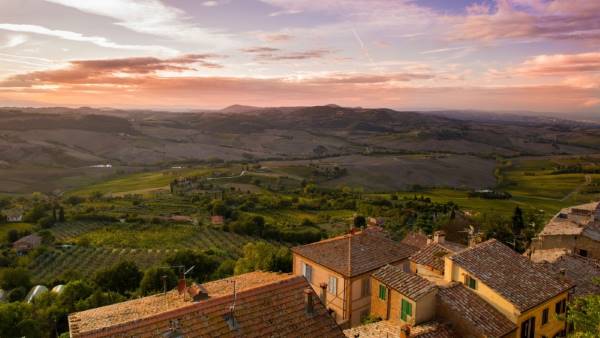
What to visit in Montecatini Terme
Sure, here are some of the top tourist attractions in Montecatini Terme, Italy with brief information about each: 1. Terme di Montecatini - This is a famous spa center which is believed to have therapeutic hot springs and mud baths. It offers a range of spa treatments and attracts people from all over the world seeking for rejuvenation and relaxation. 2. Piazza del Popolo - The central square of Montecatini Terme, this area is known for its stunning architecture, lively atmosphere, and daily markets that offer fresh produce, souvenirs, and hand-crafted goods. 3. Montecatini Alto - A hilltop town overlooking Montecatini Terme, this is an ideal place to take a leisurely stroll and enjoy the scenic views of the surroundings. The cobblestoned streets, medieval architecture, and charming cafes and restaurants offer a delightful experience. 4. Funicolare di Montecatini - The Montecatini Funicular is a great way to explore the city. It is a cable car system that takes tourists from Montecatini Terme to Montecatini Alto, where they can explore the historic village as well as view the scenic beauty of the area. 5. Cascine di Tavola - This is the largest park in the region and is a great spot for picnics, cycling, jogging or a leisurely walk. There is a lake, a playground for kids, a petting zoo, and a cafe where visitors can relax and enjoy the beautiful surroundings. 6. Basilica di Santa Maria Assunta - This beautiful church is located in the heart of Montecatini Terme and is dedicated to the Virgin Mary. The interior is beautifully decorated with frescoes and statues, and the church is an important religious site for the local community and tourists. 7. Museo Civico Montecatini Terme - This is a local museum that showcases the culture and history of the region. It houses artifacts, artwork, and exhibits that detail the area's rich history and traditions. It is an interesting spot to learn about local history and culture. These are some of the top tourist attractions in Montecatini Terme, each offering a unique and memorable experience. In this website, you can find many other destinations to visit in Italy, so you can have a look in the "USEFUL LINKS" sections in this page for other places that could inspire your trip. You can find more information in this page dedicated to the top 10 attractions to visit in Montecatini Terme .
When to go on holiday to Montecatini Terme
The best time to visit Montecatini Terme in Italy is during the spring months of April, May, and June or the fall months of September and October. During these seasons, the weather is mild and comfortable, perfect for outdoor activities such as hiking or visiting the city's thermal spas. Moreover, Montecatini Terme can get quite crowded during the summer months of July and August, and prices are at their highest during this period. Therefore, it is better to avoid visiting during the peak summer season. You can book here visit and activities to do during your holiday !
How to get to Montecatini Terme
There are a few ways to get to Montecatini Terme, depending on where you are coming from. If you are flying into Italy, the closest airports to Montecatini Terme are Florence Peretola Airport (FLR) and Pisa International Airport (PSA). From there, you can take a train or bus to Montecatini Terme. If you are already in Italy, the easiest way to get to Montecatini Terme is by train. Montecatini Terme has a train station that is serviced by regional trains. The train ride from Florence takes about 45 minutes, while the train ride from Pisa takes about 1 hour and 20 minutes. If you prefer to drive, Montecatini Terme is located off the A11 autostrada, which connects Florence and Pisa. It is about a 30-minute drive from Florence and a 50-minute drive from Pisa. Another option is to hire a private transfer or take a taxi from the airport or train station to Montecatini Terme. This option is more expensive but very convenient, especially if you have a lot of luggage. To find the most convenient flights, compare (and book if you like!) the best offers here on Skyscanner . To hire a car to visit Montecatini Terme, I recommend to check this: COMPARE HERE ALL OFFERS FOR CAR RENTAL
Typical foods in Montecatini Terme
Montecatini Terme is a small but charming town in the Tuscany region of Italy, famous for its thermal waters and beautiful architecture. Here are some of the typical foods you can try while visiting: 1. Ribollita: A hearty soup made with bread, cannellini beans, and vegetables like kale, carrots, and celery. It's a perfect dish for colder days, and it's usually served with a drizzle of olive oil and grated Parmesan cheese. 2. Pappardelle alla lepre: A pasta dish made with broad, flat noodles (pappardelle) and a sauce made from hare meat, tomato sauce, and red wine. This dish is a speciality of Tuscany and is a must-try for meat lovers. 3. Bistecca alla Fiorentina: A thick, juicy steak grilled on an open flame and seasoned with nothing but salt, pepper, and a drizzle of olive oil. The beef is usually from the Chianina breed, which is native to Tuscany and is known for its tender and flavorful meat. 4. Focaccia di recco: A type of flatbread made with two thin layers of dough and filled with creamy, melted cheese. This dish has its origin in the Liguria region but is still very popular in Montecatini Terme. 5. Torta co’ becchi: A sweet cake made with almonds, candied fruits, and honey. Its name means "cake with peaks," referring to the peaks of candied pine nuts that adorn the surface of the cake. 6. Cantucci: Crunchy almond biscuits that are perfect for dipping in sweet wine or coffee. They are a traditional Tuscan dessert and are often served at the end of a meal. You can find general info about typical foods in Italy here .
Is Montecatini Terme an expensive destination for tourists?
It depends on various factors such as the time of year you visit, your accommodation choices, and the activities you plan to do. In general, Montecatini Terme is known for its thermal spas and upscale hotels, which can be pricey. However, there are also more budget-friendly options such as guesthouses and rental apartments. The cost of food and drinks in Montecatini Terme can also vary - some dining options can be expensive while others are more affordable. If you are planning on visiting during peak season, the prices are likely to be higher. It's always a good idea to research and compare prices for accommodations and activities to find the best deals.
Where to find accomodation in Montecatini Terme
Is montecatini terme a safe destination for tourists.
Yes, Montecatini Terme is generally considered a safe place for tourists. It is a popular spa town in Tuscany, and has a low crime rate. However, as with any tourist destination, visitors should take common sense precautions such as avoiding dark and secluded areas at night, wearing a money belt to keep valuables safe, and being aware of their surroundings at all times. You can find general info about safety for tourists in Italy here . Always check updated government info about travelers's safety on the ufficial Foreign Affairs website of your government, before visiting Montecatini Terme.
What type of travelers will enjoy Montecatini Terme the most?
Montecatini Terme is known for its therapeutic thermal springs and elegant architecture, making it a popular destination for those seeking relaxation and wellness. Therefore, it is an ideal place for couples, families, and older travelers who are looking for a peaceful and rejuvenating vacation. That being said, there are also plenty of activities to keep younger travelers and groups entertained, such as hiking, exploring the local markets, and visiting nearby attractions like Pisa or Florence. However, the nightlife scene is relatively quiet, so if you're looking for a party destination, Montecatini Terme may not be the best choice.
How to get around Montecatini Terme
Montecatini Terme is a relatively small town and its historic center is easily walkable, so walking is a good option to move around. However, if you want to visit other nearby towns or attractions, using a combination of train and bus services is the most convenient way to move around the area. The train station in Montecatini Terme is well connected to other towns in Tuscany, while buses depart from Piazza Italia and connect different parts of the town. Taxis are also available, but they can be quite expensive.
What to see around Montecatini Terme
Here are some nice places to visit in a day trip from Montecatini Terme: 1. Florence: Visit this beautiful city to explore the Duomo, Ponte Vecchio, Uffizi Gallery, Piazza della Signoria, and other attractions. 2. Pisa: This city is famous for the Leaning Tower, but you can also check out the Piazza dei Miracoli, the Cathedral of Santa Maria Assunta, and the Baptistry. 3. Lucca: Known for its fortified walls, Lucca is home to several historical buildings, such as the Guinigi Tower, San Frediano church, and Puccini Museum. 4. Vinci: Visit the birthplace of the famous artist and inventor, Leonardo da Vinci, and explore the Museum of Leonardo. 5. Siena: This charming medieval town, known for its Palio horse race, offers beautiful architecture, including the Siena Cathedral and Palazzo Pubblico. 6. San Gimignano: Famous for its towers, this town is also known for its well-preserved medieval architecture and delicious wine. 7. Cinque Terre: This UNESCO World Heritage Site offers stunning coastal views, colorful houses, and hiking trails along the Mediterranean Sea. For every travel information about Italy you can click here . Wild Trips is the Wikipedia of travel: in the unfortunate case you find an error, please write to us to correct it... Thank you! Follow us on Facebook if you like wild trips around the world and beautiful itineraries in Italy: https://www.facebook.com/wildtrips .

USEFUL LINKS
Here you can find a list of destinations in Italy , each with a link to the page with detailed description about what to see and what to do: Rome: what to see and do Venice: what to see and do Florence: what to see and do Milan: what to see and do Naples: what to see and do Verona: what to see and do Bologna: what to see and do Turin: what to see and do Pisa: what to see and do Palermo: what to see and do Siena: what to see and do Genoa: what to see and do Padova: what to see and do Perugia: what to see and do Como: what to see and do Mantova: what to see and do Modena: what to see and do Catania: what to see and do Bari: what to see and do Trento: what to see and do Brescia: what to see and do Ravenna: what to see and do Ferrara: what to see and do Cagliari: what to see and do Arezzo: what to see and do Parma: what to see and do Piacenza: what to see and do Livorno: what to see and do Rimini: what to see and do Trieste: what to see and do Lucca: what to see and do Siracusa: what to see and do Alghero: what to see and do Bergamo: what to see and do Urbino: what to see and do Assisi: what to see and do Cremona: what to see and do Vicenza: what to see and do Lecce: what to see and do Grosseto: what to see and do Viterbo: what to see and do Taranto: what to see and do Orvieto: what to see and do Ancona: what to see and do Bolzano: what to see and do Gaeta: what to see and do Maratea: what to see and do Fano: what to see and do Fidenza: what to see and do Monza: what to see and do Ischia: what to see and do Civitavecchia: what to see and do La Spezia: what to see and do Sirolo: what to see and do Agrigento: what to see and do Cortina d'Ampezzo: what to see and do Ravello: what to see and do Desenzano del Garda: what to see and do Gaiole in Chianti: what to see and do Pollenzo: what to see and do Castellina in Chianti: what to see and do Taormina: what to see and do Spello: what to see and do Salò: what to see and do Massa Marittima: what to see and do Portofino: what to see and do Castiglione della Pescaia: what to see and do Riomaggiore: what to see and do Orbetello: what to see and do Rapallo: what to see and do San Gimignano: what to see and do Lago di Garda: what to see and do Camogli: what to see and do Portovenere: what to see and do Tropea: what to see and do Castel Gandolfo: what to see and do Luino: what to see and do Manarola: what to see and do Sorrento: what to see and do Cefalù: what to see and do Sirmione: what to see and do Lago di Como: what to see and do Lago Maggiore: what to see and do Porto Ercole: what to see and do San Teodoro: what to see and do Chianciano Terme: what to see and do Portoferraio: what to see and do Porto Cervo: what to see and do Porto Rotondo: what to see and do Procida: what to see and do Stresa: what to see and do Santa Margherita Ligure: what to see and do Vernazza: what to see and do Menaggio: what to see and do Cala Gonone: what to see and do Matera: what to see and do Castel del Monte: what to see and do Abano Terme: what to see and do Acerra: what to see and do Acireale: what to see and do Afragola: what to see and do Alessandria: what to see and do Altamura: what to see and do Andria: what to see and do Anzio: what to see and do Aprilia: what to see and do Arzachena: what to see and do Asti: what to see and do Avellino: what to see and do Badia: what to see and do Bagheria: what to see and do Bardolino: what to see and do Barletta: what to see and do Bellaria-Igea Marina: what to see and do Benevento: what to see and do Bisceglie: what to see and do Bitonto: what to see and do Brindisi: what to see and do Busto Arsizio: what to see and do Caltanissetta: what to see and do Caorle: what to see and do Carpi: what to see and do Carrara: what to see and do Caserta: what to see and do Casoria: what to see and do Castellammare di Stabia: what to see and do Castelrotto: what to see and do Catanzaro: what to see and do Cattolica: what to see and do Cava de' Tirreni: what to see and do Cavallino-Treporti: what to see and do Cerignola: what to see and do Cervia: what to see and do Cesena: what to see and do Cesenatico: what to see and do Chioggia: what to see and do Cinisello Balsamo: what to see and do Comacchio: what to see and do Corigliano-Rossano: what to see and do Cosenza: what to see and do Crotone: what to see and do Cuneo: what to see and do Faenza: what to see and do Fiumicino: what to see and do Foggia: what to see and do Foligno: what to see and do Forio: what to see and do Forlì: what to see and do Gallarate: what to see and do Gela: what to see and do Giugliano in Campania: what to see and do Grado: what to see and do Guidonia Montecelio: what to see and do Imola: what to see and do Jesolo: what to see and do L'Aquila: what to see and do Lamezia Terme: what to see and do Latina: what to see and do Lazise: what to see and do Legnano: what to see and do Lignano Sabbiadoro: what to see and do Limone sul Garda: what to see and do Livigno: what to see and do Manfredonia: what to see and do Marano di Napoli: what to see and do Marsala: what to see and do Massa: what to see and do Mazara del Vallo: what to see and do Merano: what to see and do Messina: what to see and do Modica: what to see and do Molfetta: what to see and do Moncalieri: what to see and do Montecatini Terme: what to see and do Montesilvano: what to see and do Novara: what to see and do Olbia: what to see and do Pavia: what to see and do Pesaro: what to see and do Pescara: what to see and do Peschiera del Garda: what to see and do Pistoia: what to see and do Pomezia: what to see and do Pordenone: what to see and do Portici: what to see and do Potenza: what to see and do Pozzuoli: what to see and do Prato: what to see and do Quartu Sant'Elena: what to see and do Ragusa: what to see and do Reggio Calabria: what to see and do Reggio Emilia: what to see and do Rho: what to see and do Riccione: what to see and do Riva del Garda: what to see and do Salerno: what to see and do San Michele al Tagliamento: what to see and do San Vincenzo: what to see and do Sanremo: what to see and do Sassari: what to see and do Savona: what to see and do Selva di Val Gardena: what to see and do Sesto San Giovanni: what to see and do Teramo: what to see and do Terni: what to see and do Tivoli: what to see and do Torre del Greco: what to see and do Trani: what to see and do Trapani: what to see and do Treviso: what to see and do Udine: what to see and do Varese: what to see and do Velletri: what to see and do Viareggio: what to see and do Vieste: what to see and do Vigevano: what to see and do Vittoria: what to see and do Aosta: what to see and do Campobasso: what to see and do Isernia: what to see and do
Contact [email protected] for any queries on a travel itinerary, advices about a trip report or to organize sailing holidays in Italy. Site Map - Privacy

IMAGES
VIDEO
COMMENTS
The Montecatini Terme Tourist Information Office is located in Piazza del Popolo close to the Guidotti fountain. Getting To Montecatini. Find information on how to get to Montecatini by air, car or train. How to get to Montecatini Terme. Montecatini Train Stations. Montecatini has two train stations. Find their locations and how to book tickets.
Montecatini Terme: Travel Guide & Tourist Information. Montecatini Terme is a famous spa town set in the beautiful region of Tuscany, Italy. Montecatini Terme has long been known for its 'healing' thermal waters at least since the time of the Romans. Here you will find the best things to do plus helpful tourist information so you can get ...
Montecatini Terme, located a few kilometers from some of the major Tuscan cities of art and the two main regional airports, owes its fame to the therapeutic properties of its waters, for the refinement of the buildings and for the architectural heritage built around the springs. The perfect combination of wellness and health, Montecatini is a prestigious destination for all those looking for ...
Montecatini Terme, a natural thermal water spa between Florence & Lucca, an ideal itinerary stop while in Tuscany. Useful info, how to arrive & guide for Montecatini Terme. Toggle navigation. Places to go. ... Tourist Information Office. Where: Viale Verdi 66/68. Tel: +39 0572 772244.
Montecatini Alto . A historic funicular railway, more than 100 years old, runs from Montecatini Terme up the hill to the picturesque hill town of Montecatini Alto, where there's a small castle, three churches, a large square with restaurants and outdoor cafes, a few tourist shops, and great views over the countryside.
About Montecatini Terme. The largest and most famous of Tuscany's spa towns, Montecatini Terme has been revered for its curative waters since at least the 16th century, when the first baths were built here. Two centuries later, neighborhood royalty began to take note after the opening of the town's first grand spas, putting Montecatini ...
The tourist area of Montecatini Terme is located north of the railway. Here the hotels are many and almost all of excellent quality. Many of them were built in the 1900s to accommodate the old bourgeoisie who went to the spas, and have maintained an atmosphere of yesteryear. Others, on the other hand, have been renovated, and many also have ...
A haven of relaxation and wellness, located in the heart of Tuscany. Montecatini Terme and its picturesque surroundings are an ideal destination for your holidays. Montecatini Terme is famous for its thermal waters with therapeutic and regenerating properties, but that's not all. In fact, besides its historical centre with elegant Art Nouveau ...
Top Things to Do in Montecatini Terme, Italy: See Tripadvisor's 84,019 traveller reviews and photos of Montecatini Terme tourist attractions. Find what to do today, this weekend, or in April. We have reviews of the best places to see in Montecatini Terme. Visit top-rated & must-see attractions.
Palazzo comunale in Montecatini Terme (Photo by Sailko / CC BY). Continuing on the final stretch of viale Verdi is the Excelsior, the first of the spas, the Terme Leopoldine (1777) and the spas Tamerici (1901) and Regina (1920s). A little further on, at the end of the Avenue, we arrive at the monumental Tettuccio built in neoclassical style in 1779. . Another spa, the Terme Redi, is located in ...
43.887053 10.768125. 3 Hotel San Marco Montecatini Terme, Viale Carlo Rosselli, 3, ☏ +39 0572 71221, fax: +39 0572 770577. The San Marco is a 3-star hotel. Single, double, triple and family rooms. Private bath, Wi-Fi access, internet point, private parking, swimming pool and tennis court. €66 double. edit.
Montecatini Terme is a garden city set in the picturesque Valdinievole, an amphitheatre of green hills in the heart of Tuscany.. Renown all over the world for its rich thermal springs that were already exploited in Roman times. Today Montecatini Terme is one of the most popular and visited spa towns in Italy, thanks to the substantial architectural interventions carried out at the beginning of ...
Terme Montecatini - the main thermal and spa resort in Italy. Tuscany, a perfect region of Italy, and a land of great cultural history, wine hills, warm sea, and high mountains also boasts the fame of the most "thermal" area on the Apennine Peninsula. Tuscany has the largest number of Italian thermal and spa resorts, thirty-nine to be ...
Here are our top 10 things to do and see while visiting Montecatini Terme. 1. Breakfast like an Italian in Piazza del Popolo. The impressive Guidotti fountain in Piazza del Popolo, Montecatini Terme. Make sure you have at least one breakfast in a coffee bar in Piazza del Popolo in the centre of Montecatini.
Best known for the therapeutic properties of its waters, Montecatini Terme has always been a popular destination for those seeking regenerating vacations. At the turn of the 20th century, tourism-related facilities began to flourish and, with them, the need to combine the thermal baths with entertainment or sports also grew.
Montecatini Terme lies at the extreme foothills of the Apennines, on the west side of Serravalle Pistoiese ( Pistoia ), at the centre of the popular Valdinievole. Montecatini has been focused from time immemorial on its biggest resource: the thermal waters that gush naturally out of the ground. The whole city is organized so that every visitor ...
Montecatini Terme is known and loved for its waters and its Liberty architecture. The city is full of green spaces and is perfect to discover on foot, in a quiet and peaceful atmosphere pervaded by cultural stimuli.. You can cross and stop in the pine forestafter observing the Art Nouveau buildings.Among all, the complex of Terme Tettuccio, built at the end of the 18th century and completed at ...
Montecatini Terme, as the name suggests is a Spa town and has long been known for it's 'healing' natural waters at least since the time of the Romans. However, there are claims that the waters were used for their healing properties long before. With a rich past in health and well-being Montecatini is the place to visit for an authentic ...
The Montecatini Thermal Baths' monumental complex is unmissable, besides one's interest in the healing powers of the waters. Visiting the splendid Thermal Park, wholly immersed in the greenery of Tuscany, it is also possible to see the gardens of the well-known Terme del Tettuccio, among the oldest in Montecatini. The recent decorations that ...
Get information on Montecatini Terme Travel Guide - Expert Picks for your Vacation hotels, restaurants, entertainment, shopping, sightseeing, and activities. Read the Fodor's reviews, or post your ...
Sure, here are some of the top tourist attractions in Montecatini Terme, Italy with brief information about each: 1. Terme di Montecatini - This is a famous spa center which is believed to have therapeutic hot springs and mud baths. It offers a range of spa treatments and attracts people from all over the world seeking for rejuvenation and ...
Montecatini Terme (Montecatini-Terme, according to ISTAT documentation) is an Italian comune (municipality) of c. 20,000 inhabitants in the province of Pistoia, in the Italian region of Tuscany.It is the most important center in Valdinievole.The town is located at the eastern end of Piana di Lucca and has a strong tourism industry, as well as industrial and commercial industries related to the ...